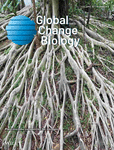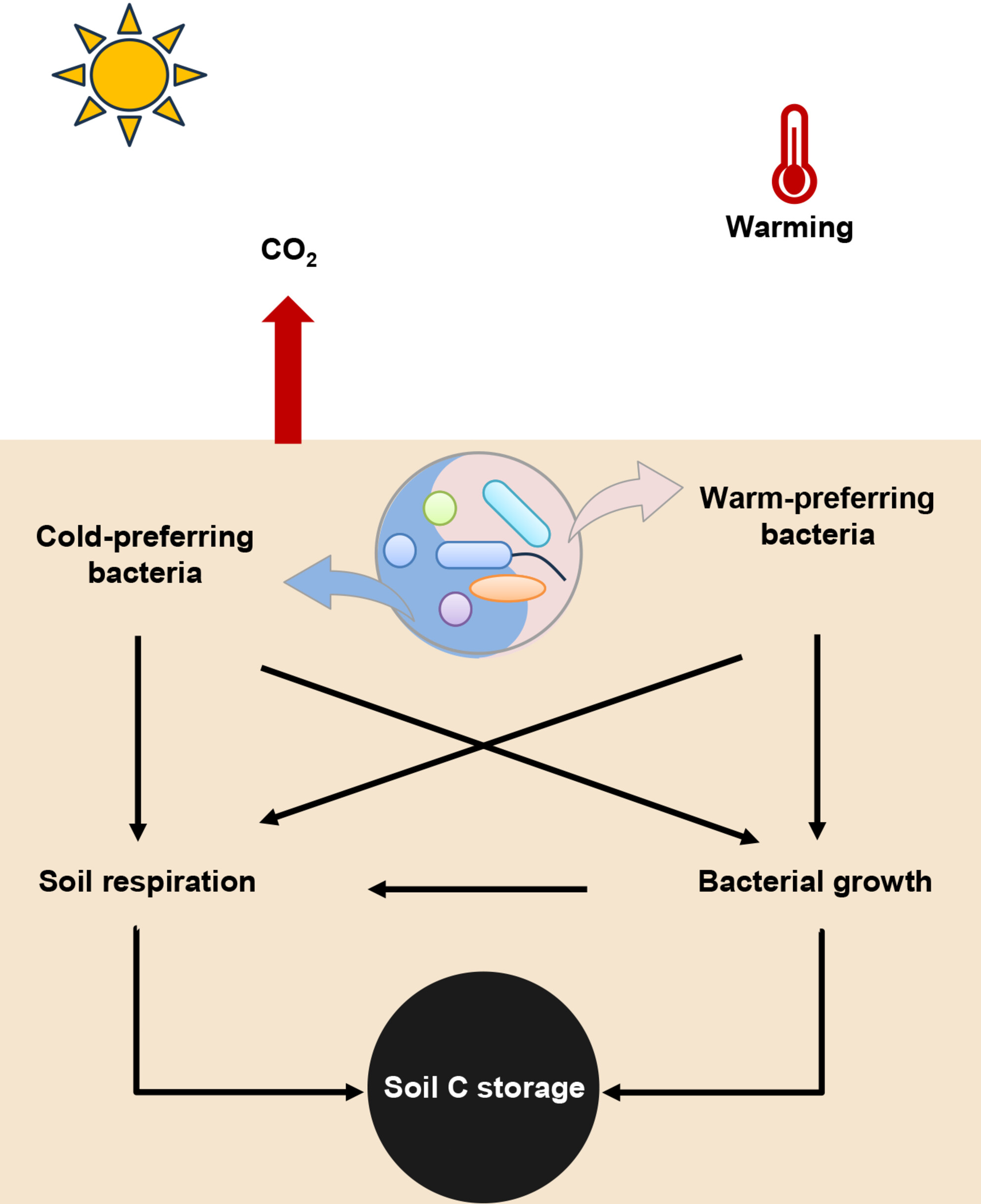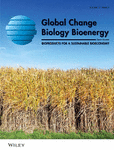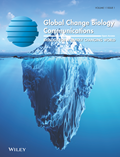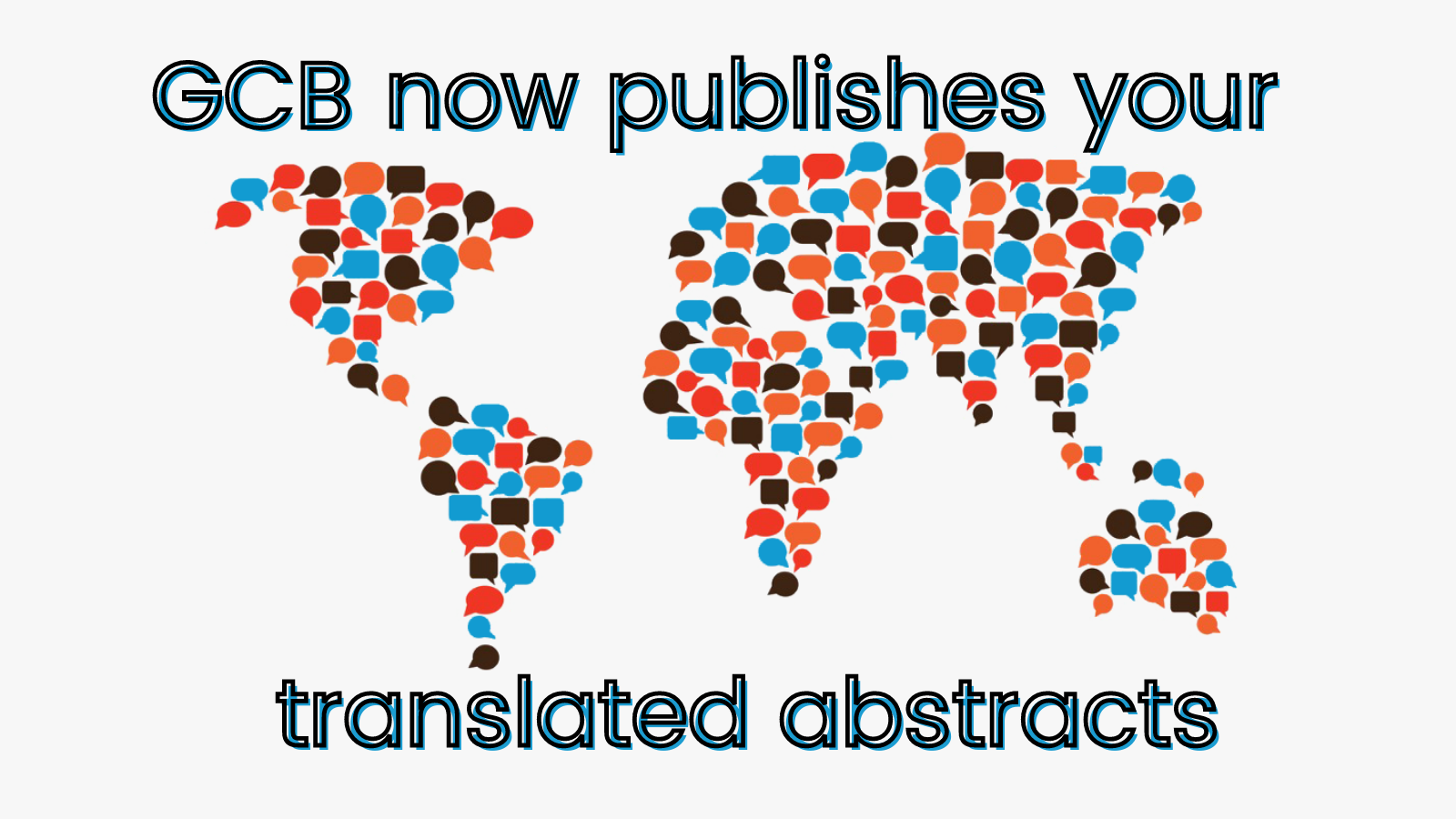Journal list menu
Export Citations
Download PDFs
ISSUE INFORMATION
RESEARCH ARTICLES
Mycorrhizal associations relate to stable convergence in plant–microbial competition for nitrogen absorption under high nitrogen conditions
- First Published: 31 May 2024
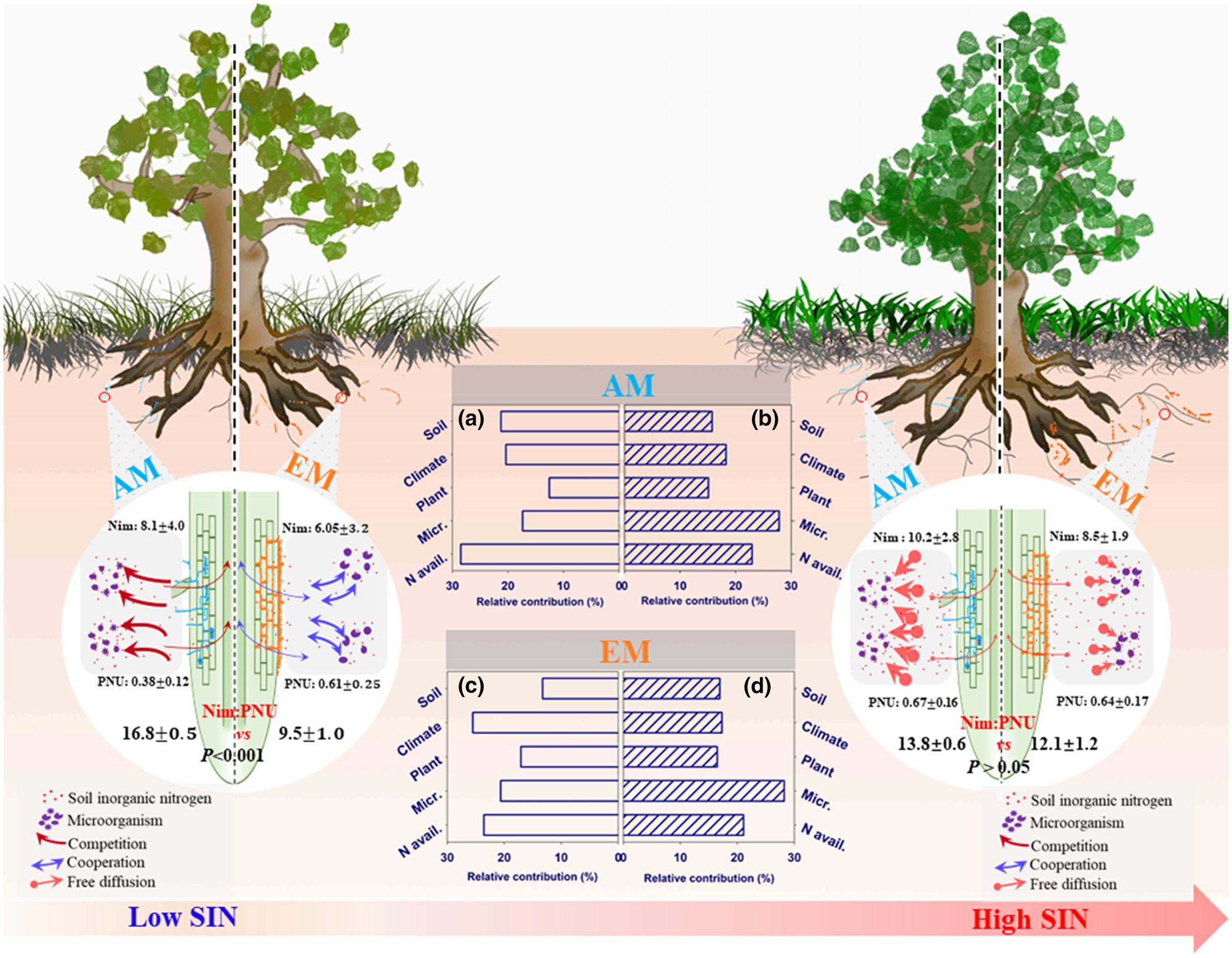
We present a global synthesis of paired nitrogen absorption by plants (PNU) and soil microorganisms (Nim) using 1018 observations across a wide variety of soil nitrogen availability. The results showed that the PNU:Nim ratio converges around a stable state at high nitrogen availability, but also with opposite interaction between arbuscular- and ectomycorrhizal-dominated ecosystems at low nitrogen availability.
Acclimation to warmer temperatures can protect host populations from both further heat stress and the potential invasion of pathogens
- First Published: 05 June 2024
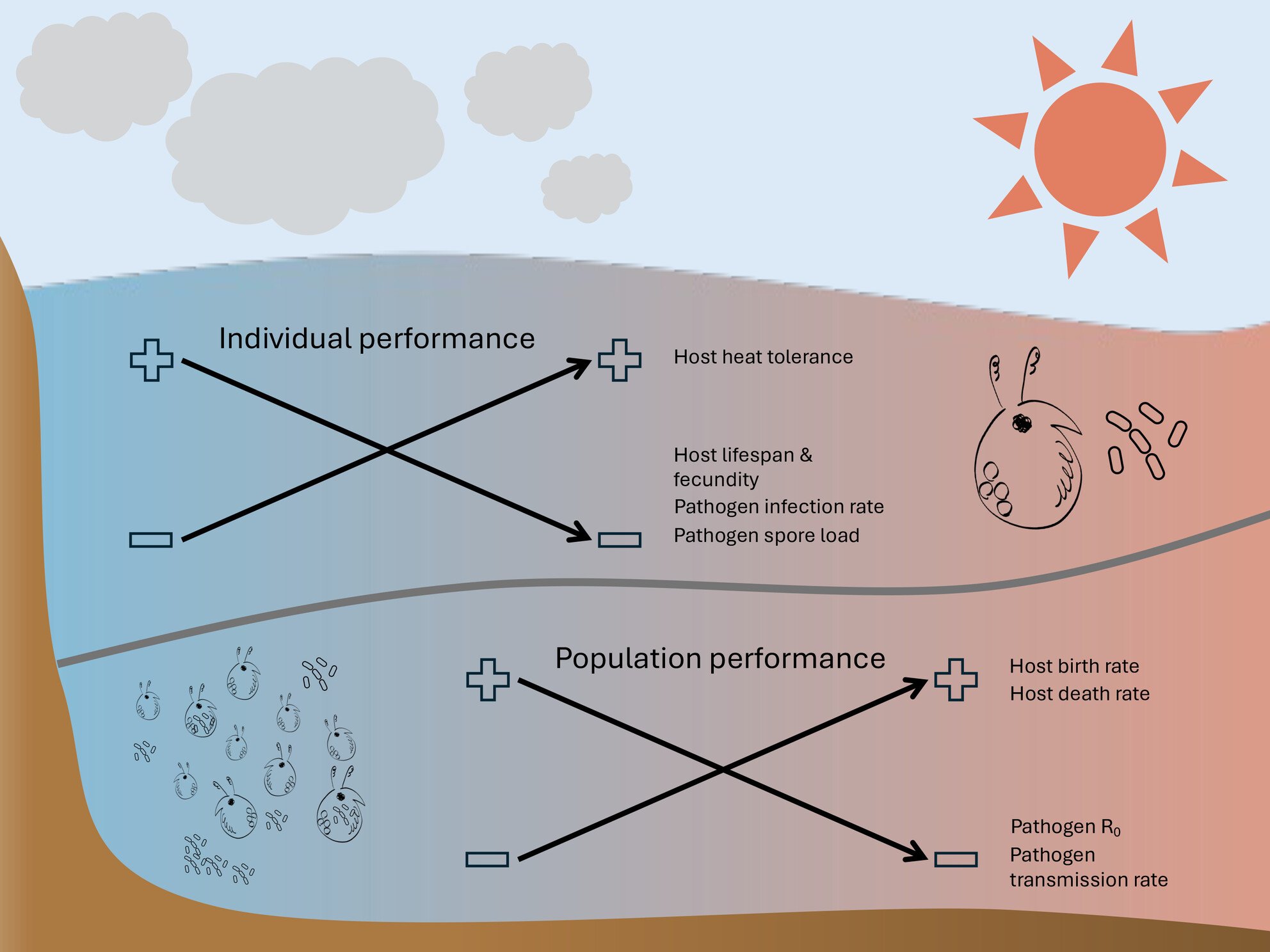
How hosts and pathogens react to higher temperatures depends on both their heat tolerance and capacity for population growth. Our study found that hosts overall fare better in warmer conditions, with faster growth rates and a greater capacity to tolerate the heat. In contrast, pathogen performed consistently worse under warming, limiting the potential spread of disease. The results suggest that hosts could benefit more from warming than pathogens. However, understanding the full impact requires linking individual traits to population processes under scenarios of warming.
Southern Africa's Great Escarpment as an amphitheater of climate-driven diversification and a buffer against future climate change in bats
- First Published: 05 June 2024
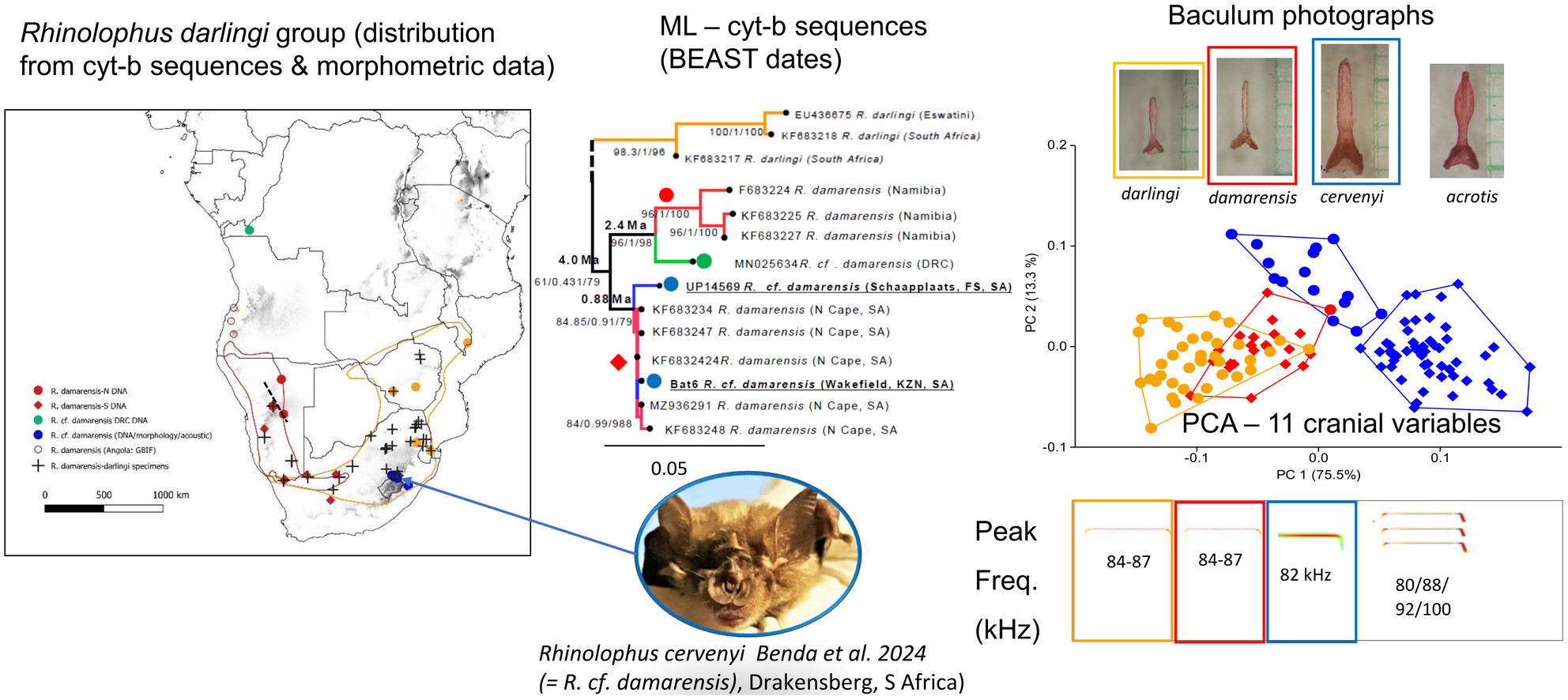
Climatic variation over space and time has shaped the evolution of different groups of mountain-associated bats across the Great Escarpment of southern Africa, leading to species and intraspecific lineages whose distributions are closely associated with different biomes and biogeographic features. At least three new species have recently been described or await formal taxonomic description. Notwithstanding the effect of habitat loss and degradation, future climate models show that the eastern Escarpment of southern Africa may act as an important buffer against climate change for mountain bats.
Salinity decline promotes growth and harmful blooms of a toxic alga by diverting carbon flow
- First Published: 01 June 2024
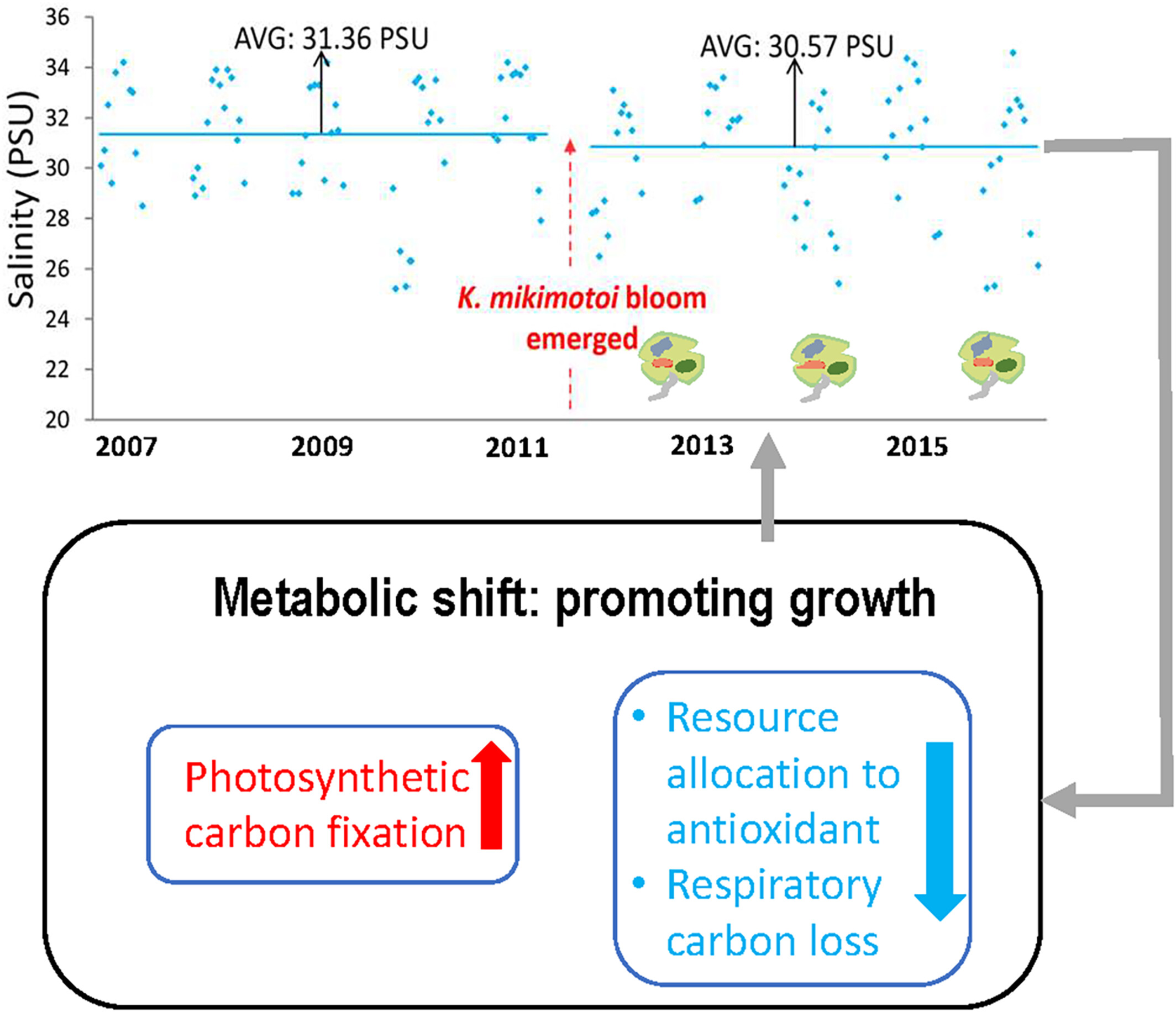
Global climate change alters precipitation and ice melt patterns causing freshening of some coastal marine waters. This has the potential to impact phytoplankton community and harmful algal blooms. This study monitored a coastal bay for a decade and found salinity decline and bloom increase of the toxigenic dinoflagellate Karenia mikimotoi. To understand the underlying mechanism, we conducted physiological and molecular analyses for laboratory cultures. Results reveal a remarkable metabolic reprogramming under reduced salinity promoting growth, providing the link between freshening and bloom increases.
REVIEWS
Soil organic matter priming: The pH effects
- First Published: 01 June 2024

We reviewed (i) the dependence of priming effects (PEs) on soil pH both theoretically and based on a meta-analysis, (ii) prerequisites and mechanisms of PE depending on pH, and (iii) the global change consequences for PE in soil. In conclusion, soil pH is one of the strongest but up to now disregarded factors of PE, defining soil organic matter decomposition through short-term metabolic adaptation of microbial groups and long-term shift of microbial communities.
RESEARCH ARTICLES
Future carbon sequestration potential in a widespread transcontinental boreal tree species: Standing genetic variation matters!
- First Published: 01 June 2024
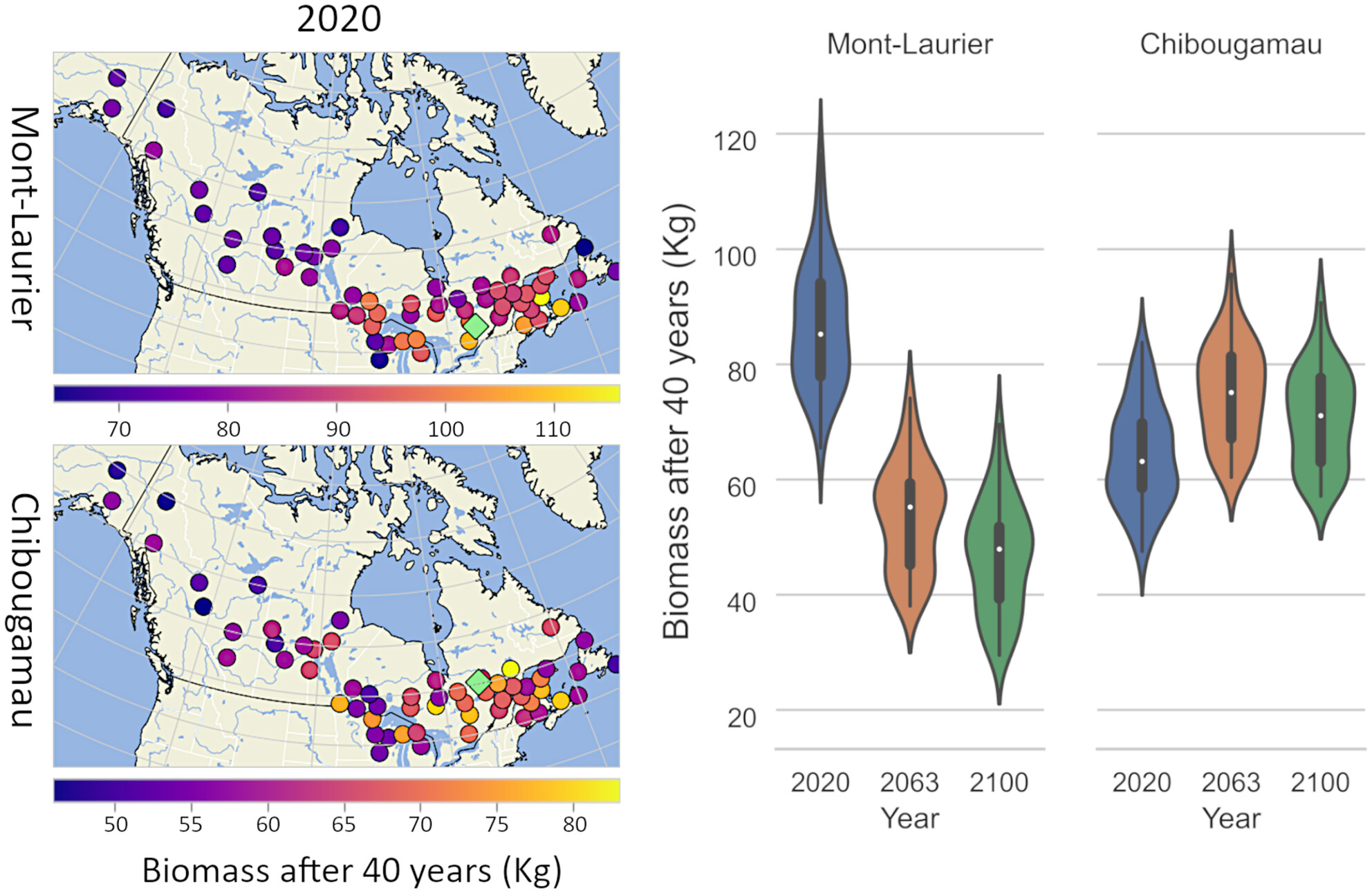
We explored how genetic variability of black spruce populations, shaped by their postglacial history and adaptation to local climate, affects the species' response to future climate change (CC). By analyzing tree rings and genetic data from 62 populations planted in four common gardens across Canada, we found that populations with varied postglacial histories will respond differently to CC, impacting their future growth and carbon sequestration potential. Understanding these genetic differences is crucial for accurately projecting the species' response to CC.
Climate change introduces threatened killer whale populations and conservation challenges to the Arctic
- First Published: 01 June 2024

Killer whales are moving northward into the Arctic as sea ice melts from a warming climate. Using genetics, we identified two highly distinct Canadian Arctic populations with origins from the western and eastern North Atlantic that appear to be at risk from both inbreeding and harvest. Although these killer whales are threatened, they may also disrupt the Arctic food chain by their increased access to Arctic prey, which presents a complex case for conservation in the Arctic ecosystem.
OPINION
Into the unknown: The role of post-fire soil erosion in the carbon cycle
- First Published: 01 June 2024
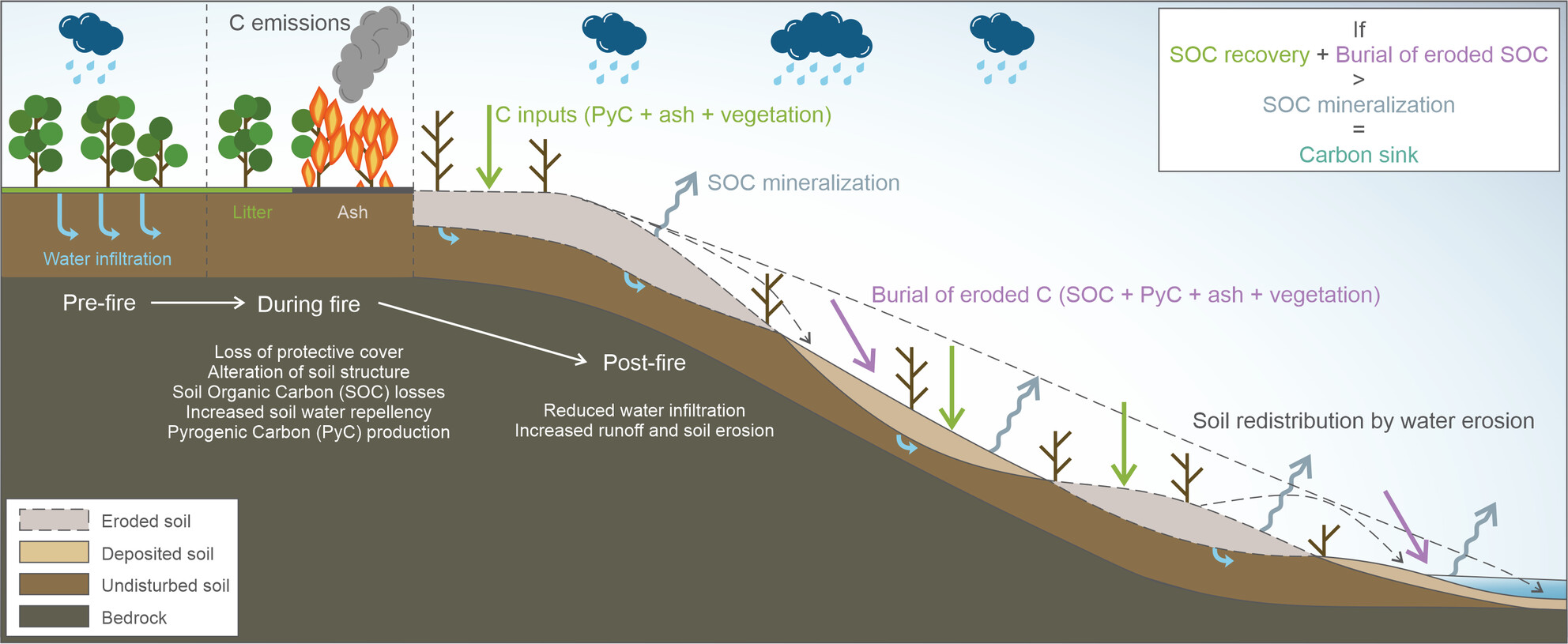
Carbon (C) redistribution associated with fire-enhanced soil erosion is speculated to affect the global C cycle, yet remains unquantified. Here we estimate the magnitude of post-fire soil organic carbon (SOC) erosion by water and assess its capacity to act as a C sink or source. Results indicate that post-fire SOC erosion is a quantitatively important process in the overall C balance of fires; and that the C sink ability of SOC water erosion alone during the first post-fire year could account for around 13% of the C emissions produced by wildland fires.
RESEARCH ARTICLES
Aridity threshold for alpine soil nitrogen isotope signature and ecosystem nitrogen cycling
- First Published: 31 May 2024
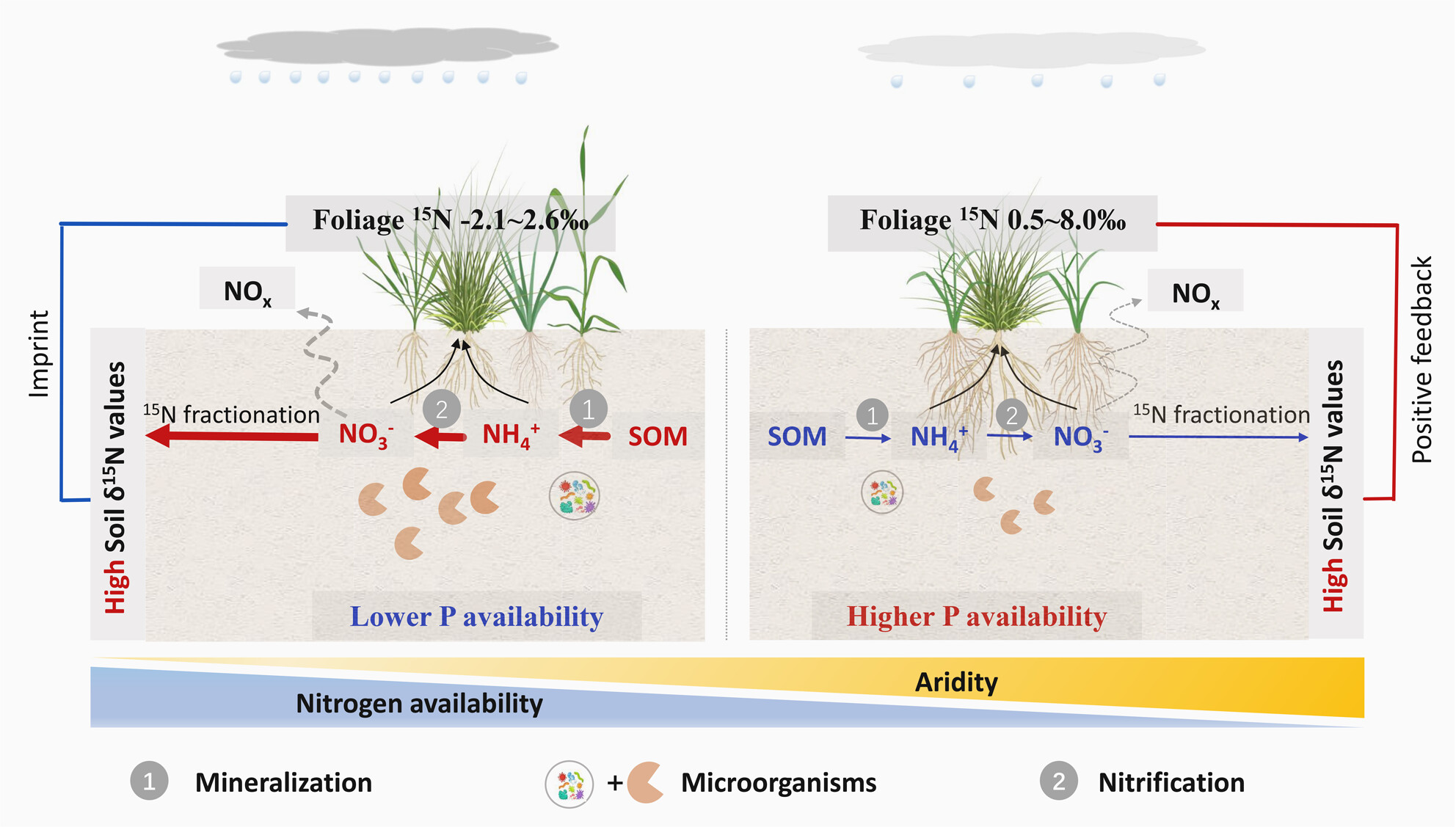
Using an aridity gradient across a 3000-km transect of drylands on the Qinghai–Tibetan Plateau, we found that the effect of increasing aridity on soil δ15N values shifted from negative to positive in both topsoil and subsoil layers. We further found different mechanisms driving soil 15N isotopes in different aridity regions. In wetter regions, high soil δ15N mainly result from 15N fractionation during soil N cycling, whereas, in drier regions, high soil δ15N might be attributed to other mechanisms.
Timing determines zooplankton community responses to multiple stressors
- First Published: 01 June 2024
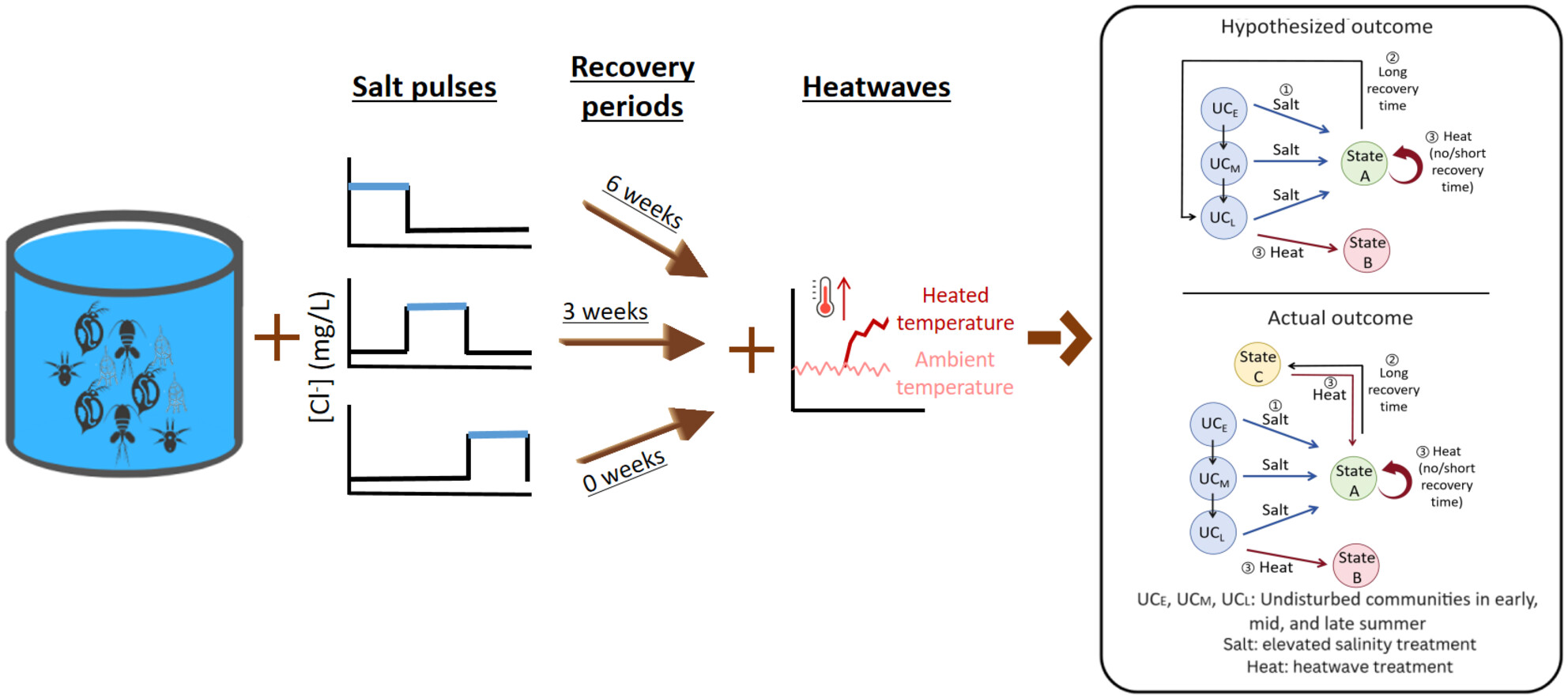
Salinity and temperature fluctuate temporally in freshwater lakes, causing salt stress and heatwaves to overlap spatially but occur asynchronously. We examined how recovery times between these stressors affect their joint impacts on zooplankton communities. The joint impacts changed with increased recovery times. Zooplankton communities did not fully recover after salt stress despite a long recovery period, suggesting legacy effects. As a result, communities recovering from previous salt exposure responded differently to heatwaves than undisturbed communities, leading to similar outcomes regardless of recovery times. Our work reveals that earlier stressor exposure can have long-lasting impacts on communities, causing unexpected combined effects.
LETTERS TO THE EDITOR
Applying a method before its proof of concept: A cautionary tale using inferred food webs
- First Published: 31 May 2024
There are significant pitfalls associated with developing food webs using inferred approaches, including violations of ecological assumptions, which considerably undermine their potentiality to resemble ecological communities and hence be practically useful. As data-driven scientists, we must, at the very least, test against some empirical data to establish confidence that indeed the inferred food webs reflect their supposed in situ communities. Otherwise, using inferred networks to make bold claims—like the titular statement by Botella et al. (2024) that food webs are influenced by land-use intensity—is highly unlikely to be useful, especially when the aforementioned claim is unsubstantiated by the Authors' own statistical analyses.
OPINION
Moving restoration ecology forward with combinatorial approaches
- First Published: 31 May 2024
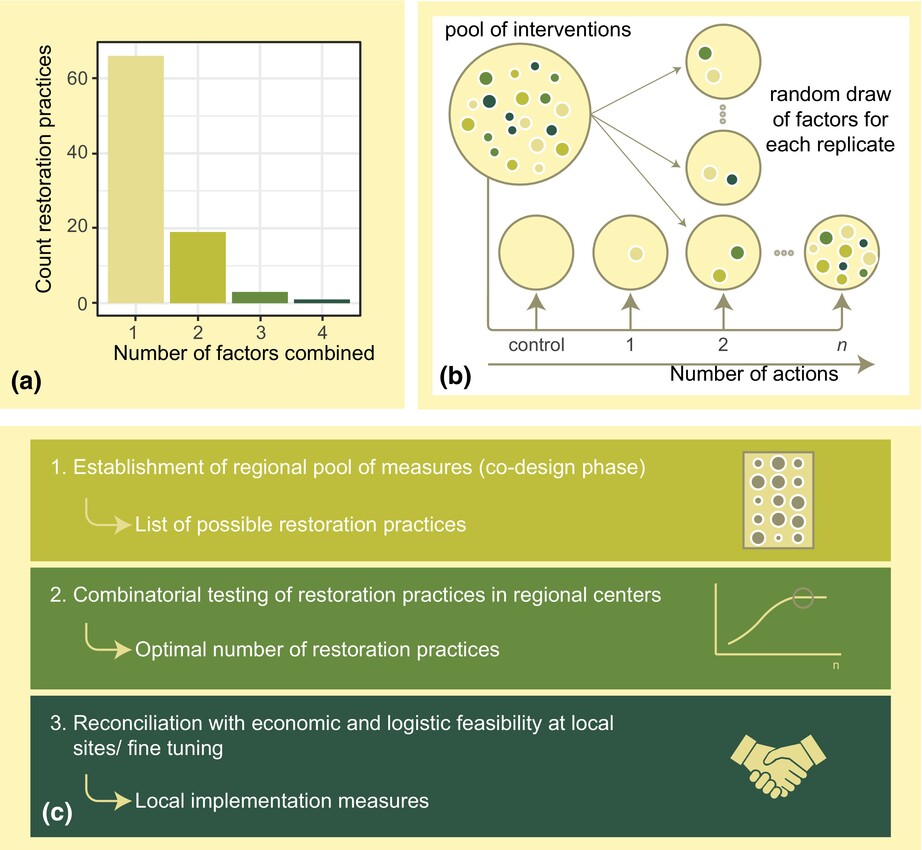
Our current planetary crises compel us to try out new approaches to restoring ecosystems that have been damaged by various factors of global change. We here propose a new way to move restoration forward by using random combinations of management practices to explore if a greater number of such practices can achieve greater restoration success. If widely adopted, this framework could uncover new combinations of interventions that can be broadly used in restoration practice.
REVIEWS
Adaptation to bioinvasions: When does it occur?
- First Published: 31 May 2024
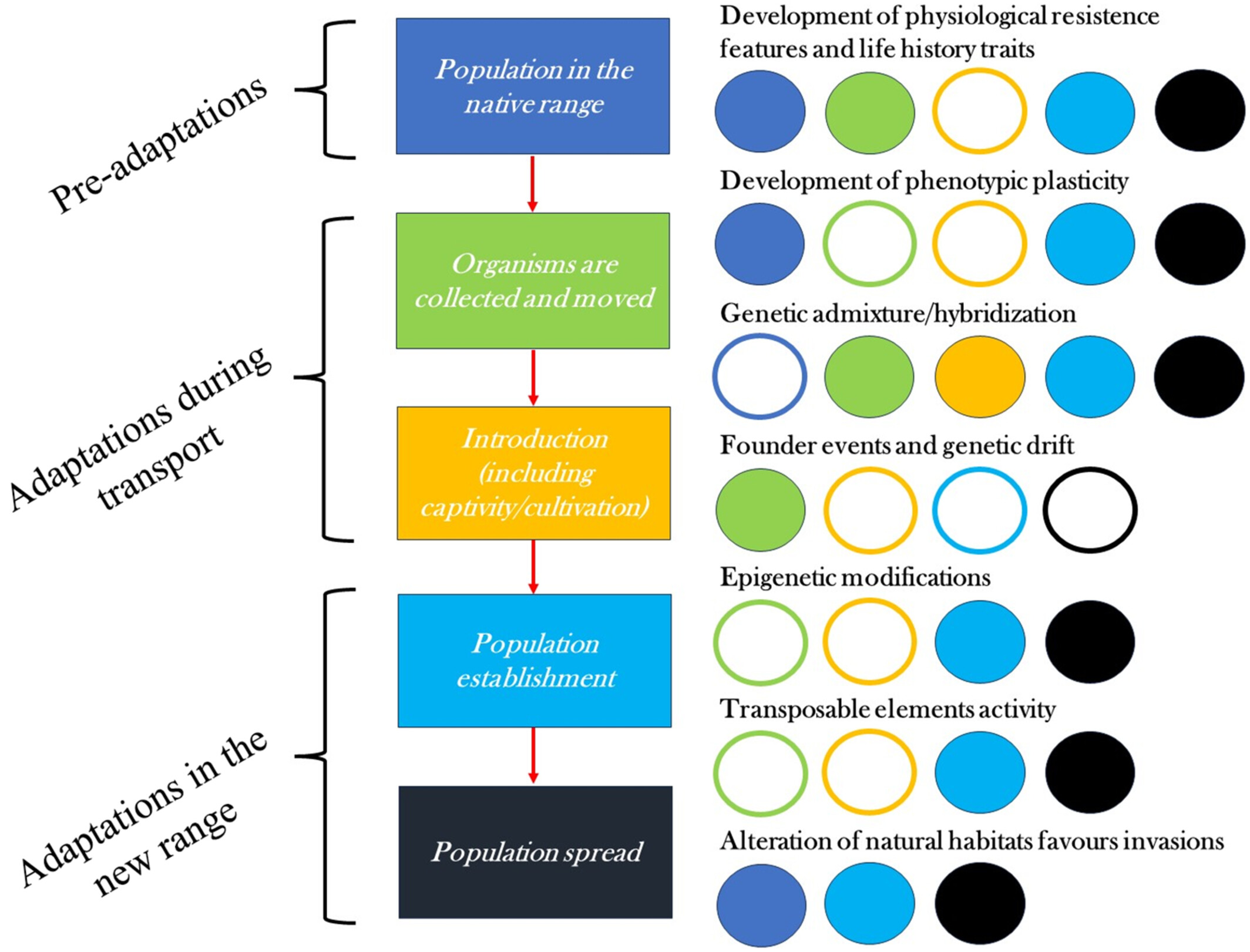
The presence of alien species can cause habitat degradation and biodiversity loss worldwide, posing severe threats to the environments. Their adaptation involves genetic, epigenetic, and ecological processes occurring in different invasion stages, and influenced by many factors like life-history traits and human intervention. This review underscores the need to consider the timing of these processes for an effective understanding and management of biological invasions.
RESEARCH ARTICLES
Predictive modelling reveals Australian continental risk hotspots for marine debris interactions with key threatened species
- First Published: 05 June 2024
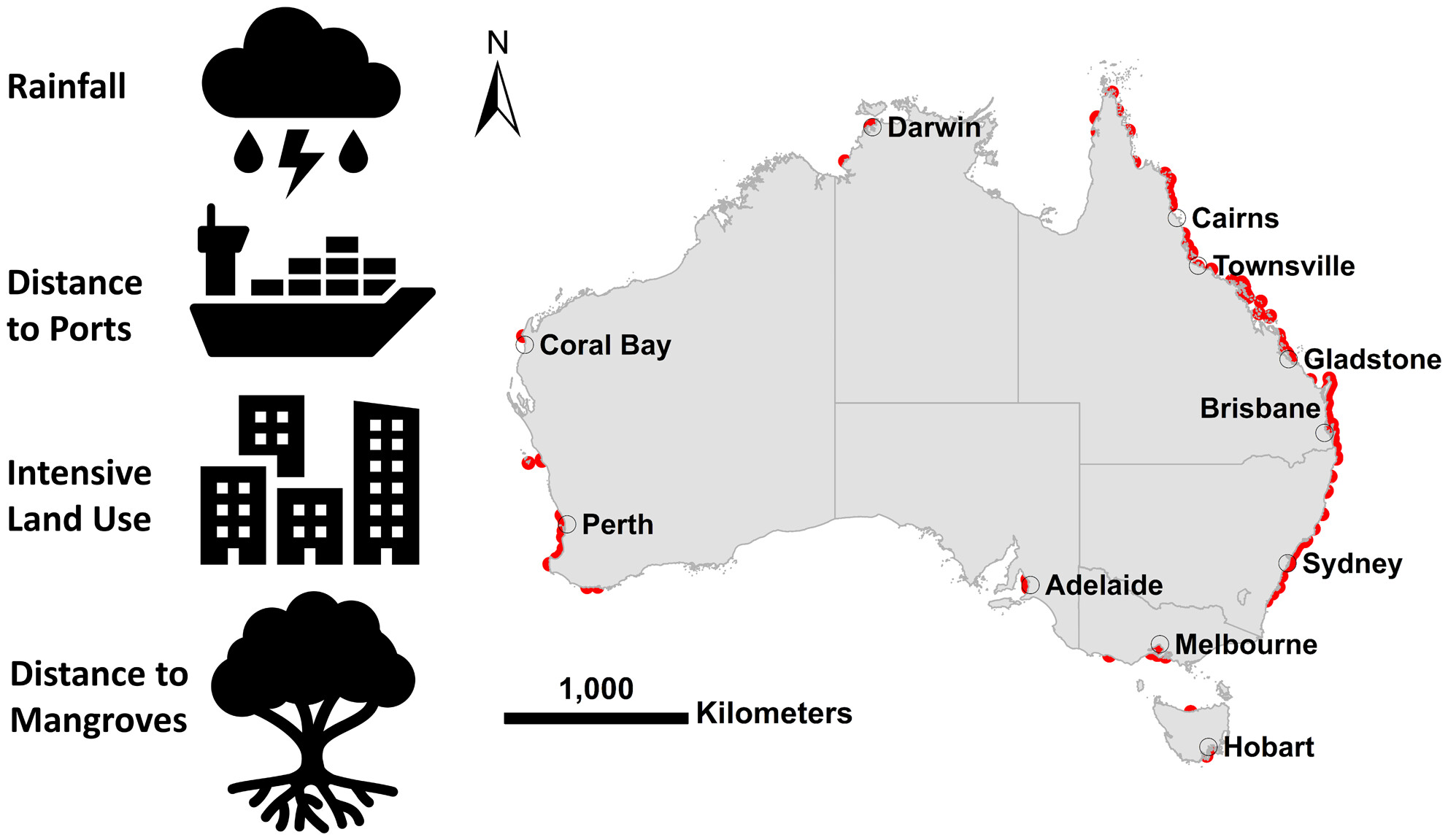
This study investigates the drivers of anthropogenic debris hotspots and uses spatial analysis to highlight areas of concern for threatened species within Australia. Analyzing a database of over 24,000 beach surveys from the Australian Marine Debris Initiative, this study identifies key factors influencing debris hotspots on a continental scale, including rainfall, land use, proximity to ports, and mangroves. This reveals numerous debris hotspots highlighting significant overlap with the habitats of four threatened species (the green turtle, dugong, Australian sea lion, and Flesh-footed Shearwater), emphasizing the need for effective debris pollution management and targeted species monitoring at continental scales.
Pacific salmon in the Canadian Arctic highlight a range-expansion pathway for sub-Arctic fishes
- First Published: 05 June 2024

Over the past 20 years, rising incidental harvest of Pacific salmon across a widening range has been monitored in Arctic Canada. In this study, we connected Indigenous and scientific knowledges to identify a two-part mechanism that explains nearly all variation in the relative abundance of salmon observed: warmer late-spring ocean temperatures in a Chukchi Sea watch-zone and persistent, warmer summertime ocean temperatures in a Beaufort Sea watch-zone together create a range-expansion corridor that will likely become more persistent in coming decades.
A modest increase in fire weather overcomes resistance to fire spread in recently burned boreal forests
- First Published: 12 June 2024
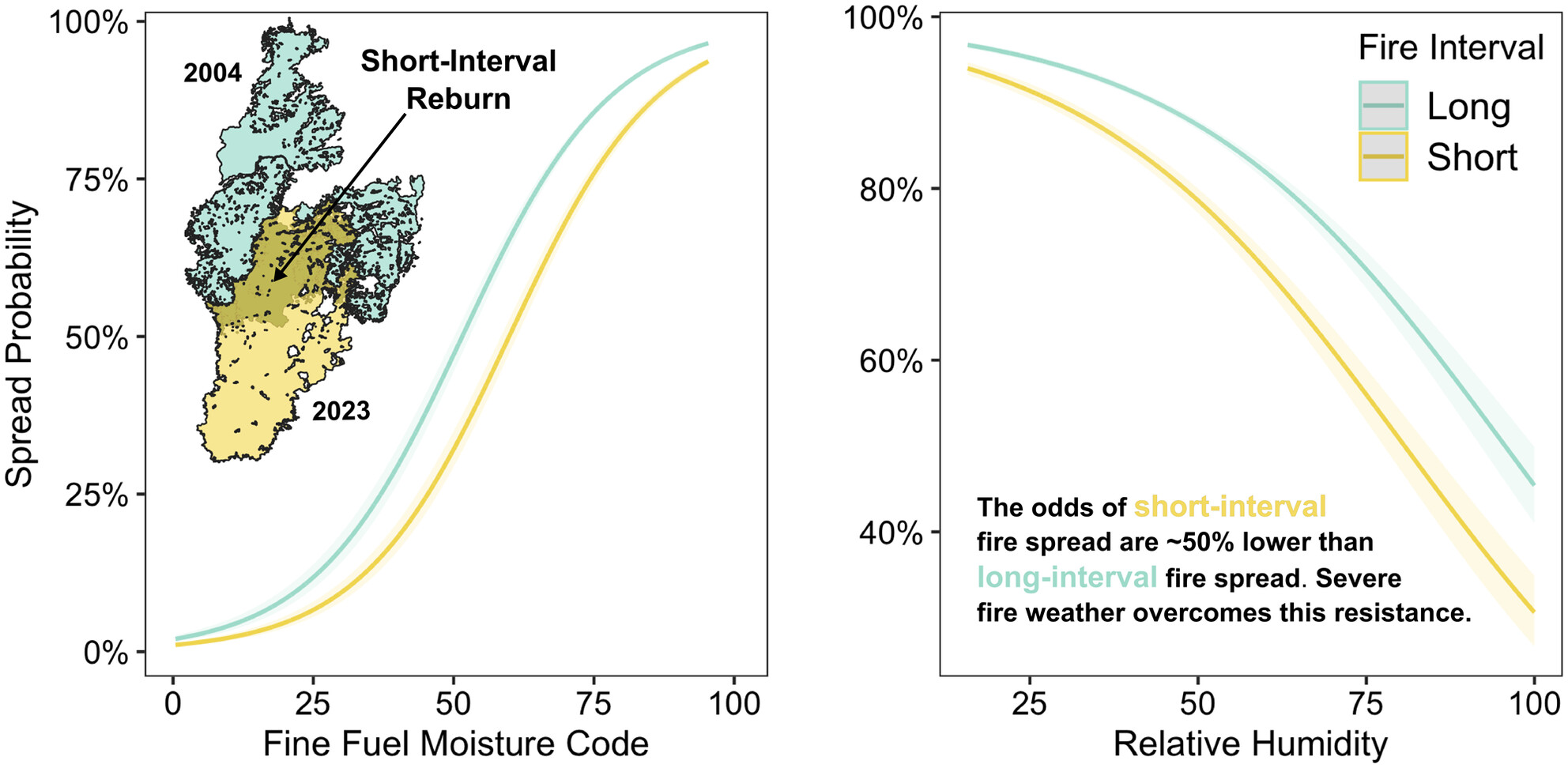
Recently burned areas resist wildfire spread for several decades due to the lack of fuel in younger forests, but occasionally do reburn under extreme weather conditions. Here, we show a modest increase in fire weather severity promotes fire spread in the youngest forests, that would otherwise have resisted fire spread. The weather conditions that enable short-interval reburning have become more common during the fire season in boreal Canada, and this trend is likely to continue.
Aridity-dependent shifts in biodiversity–stability relationships but not in underlying mechanisms
- First Published: 12 June 2024
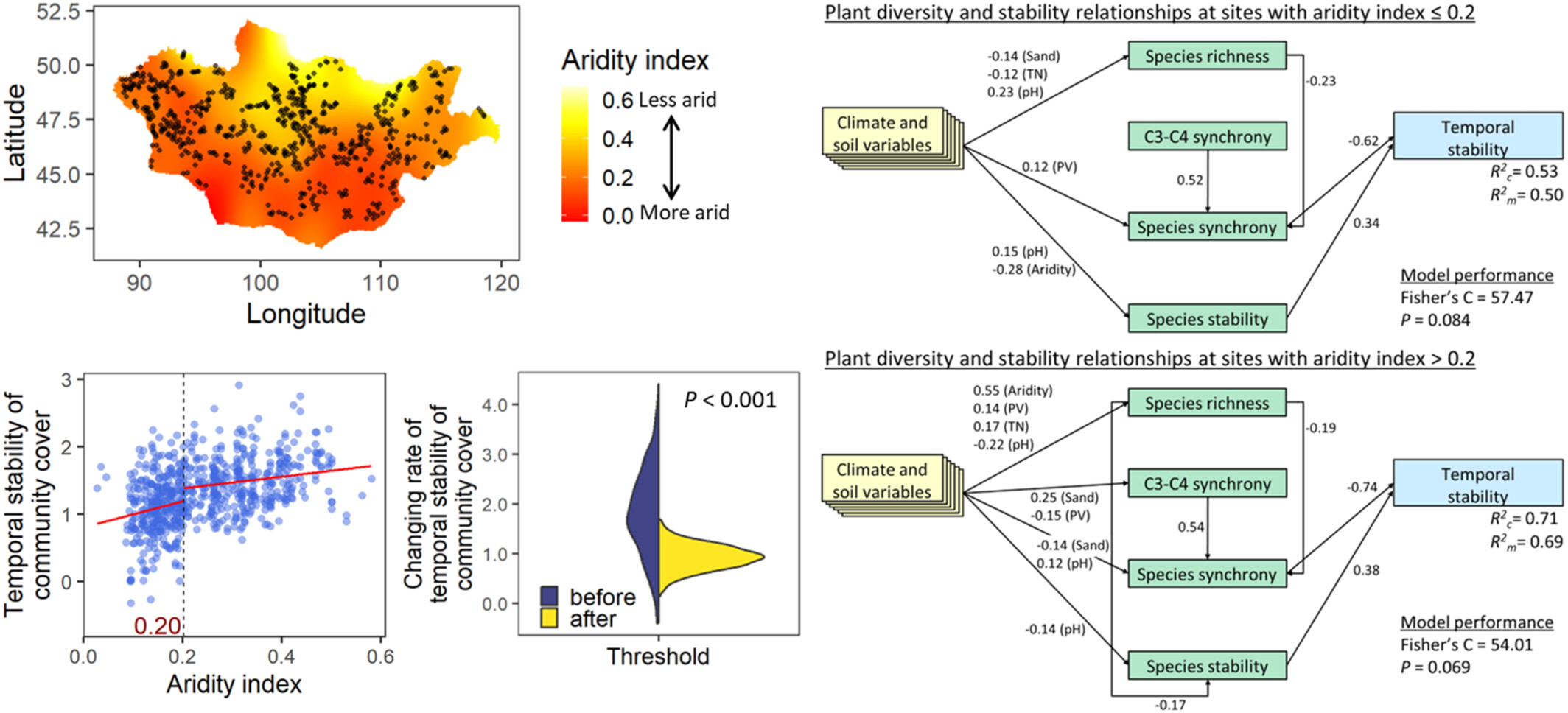
Climate change will affect the way biodiversity influences the stability of plant communities. Using an 8-year dataset from 687 sites in Mongolia, we found that the temporal community stability decreased more rapidly in more arid areas than in less arid areas. Species synchrony was a primary driver of community stability, which was consistently negatively affected by species richness while being positively affected by the synchrony between C3 and C4 species across the aridity gradient. Maintaining plant communities with a high diversity of C3 and C4 species will be key to enhancing community stability across Mongolian grasslands in a changing climate.
OPINION
Is our understanding of aquatic ecosystems sufficient to quantify ecologically driven climate feedbacks?
- First Published: 04 June 2024
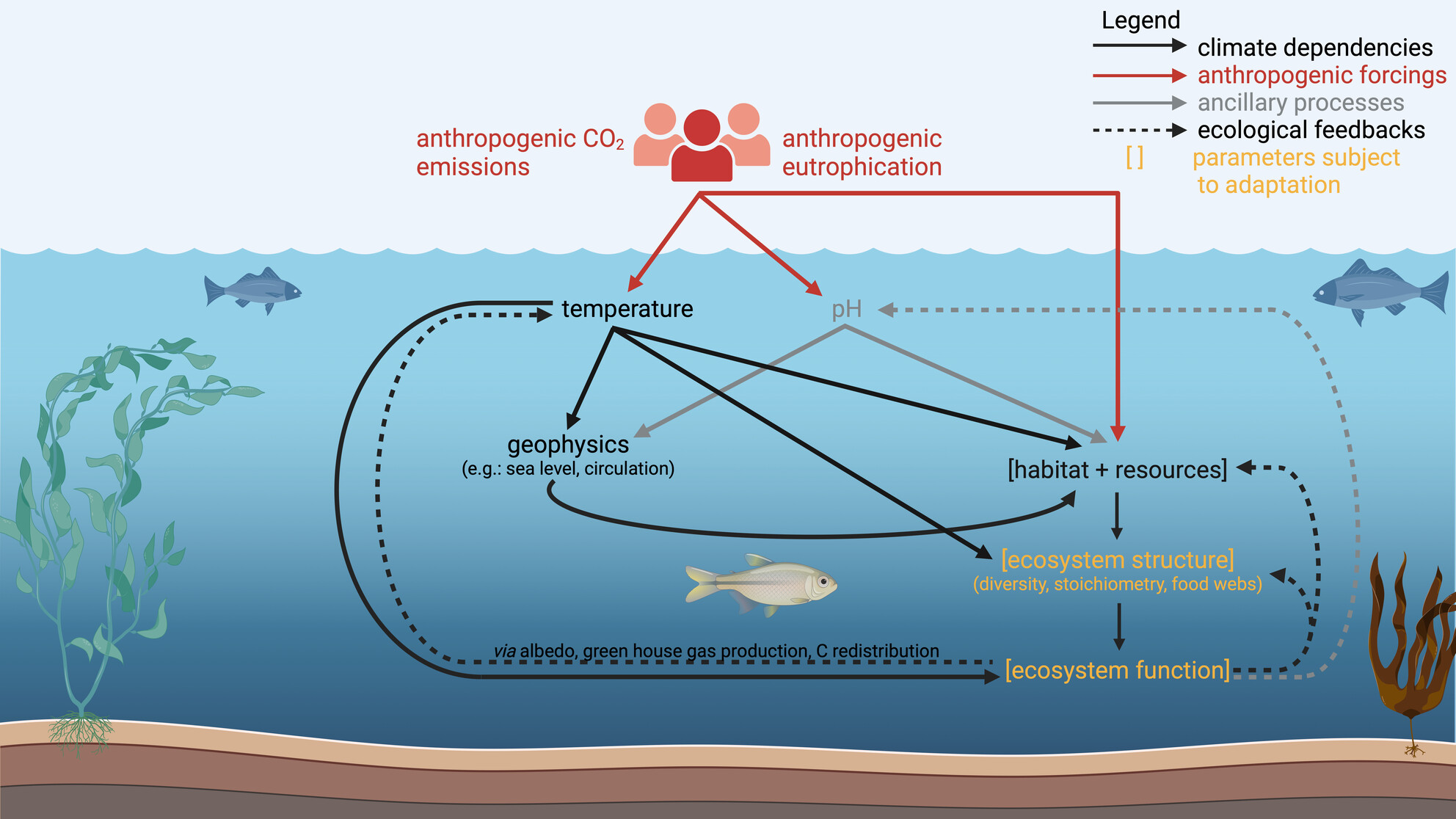
Life influences global climate by modulating Earth's atmospheric composition (which determines its greenhouse effect) and reflectivity (which determines its capacity to absorb solar heat). As human-induced climate change reshapes environments on our planet, so too will changes in ecosystem structure and function alter climate. Drawing on illustrative examples from aquatic ecosystems, this article examines whether our understanding of such feedbacks is sufficient to quantify their impact on Earth's climate future.
RESEARCH ARTICLES
The impact of aragonite saturation variability on shelled pteropods: An attribution study in the California Current System
- First Published: 03 June 2024

Observational evidence from the California Current System indicates that the long-term ocean acidification trend is severely damaging shelled pteropods, an indicator species for ocean health. This damage is linked to their vertical migration, which exposes them to more damaging conditions at depth. However, the increasing ocean acidification trend and extreme acidification events significantly amplify this exposure and the resulting damage, which emphasizes the growing concern that such conditions will continue to exacerbate the vulnerability of marine ecosystems in the future.
LETTERS TO THE EDITOR
Central Africa's mesic savannas should be conserved, not afforested
- First Published: 05 June 2024
Recent work has suggested fire suppression can be used to “restore” Central African savannas, increasing their biodiversity and capacity to sequester carbon. Here, we rebut this proposal, by showing that Central Africa's savannas are ancient, biodiverse, and fire-dependent ecosystems. Suppressing fire within them would permanently harm these savanna's biodiversity and degrade their functionality, likely without storing much carbon long term.
RESEARCH ARTICLES
Woody plant encroachment drives population declines in 20% of common open ecosystem bird species
- First Published: 05 June 2024
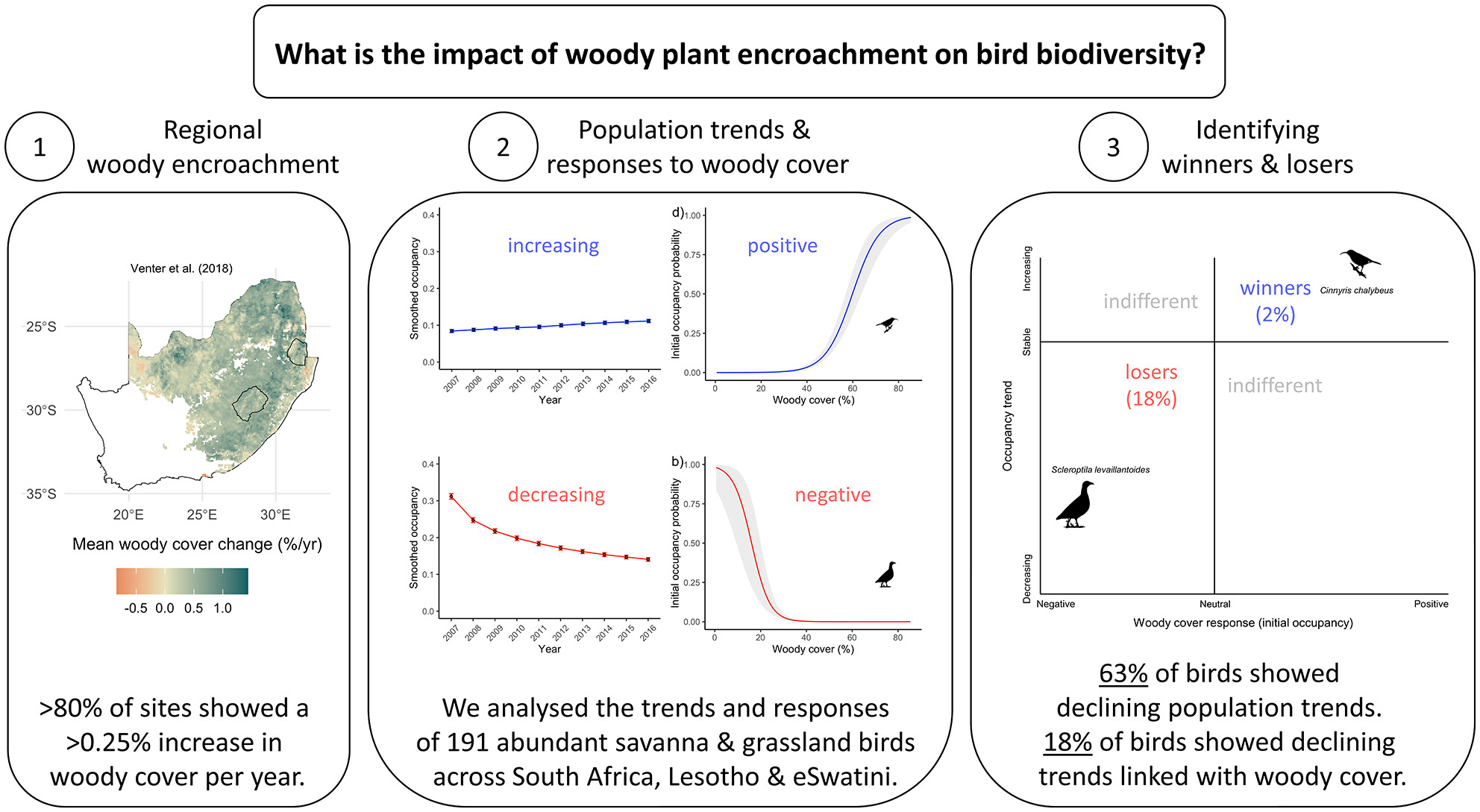
Our study utilised a comprehensive citizen science dataset to analyse the relationship between woody plant encroachment and bird occupancy in southern Africa's grassy ecosystems from 2007 to 2016. Of 191 bird species examined, 34 experienced declines in their occupancy due to increased woody vegetation, while only 4 species showed gains. Our predictions suggest that if current rates of encroachment persist, some vulnerable bird populations could see a reduction of up to 50% in their 2016 occupancy levels within the next 52 years. These findings place renewed focus on the impacts of encroachment on biodiversity and the importance of mitigating these landscape-level changes.
RESPONSE
Natural forest regeneration through fire protection is a less imminent threat for truly stable savannas than afforestation
- First Published: 07 June 2024

African bistable savannas have important biodiversity value and merit conservation. At the same time, forest restoration is a nature-based solution that can be used to increase biodiversity, carbon stocks, and human well-being. Here we describe an experiment based on natural forest regeneration through the exclusion of anthropogenic fire. We show that it is easier to let nature do its work instead of channeling it into an artificial man-made ecosystem through human-induced burning or planting. We emphasize that nature-based solutions must be biome-appropriate and the choice between restoring forests or protecting savannas requires a thorough understanding of the local context.
Don't bite the hand that feeds you: Meta food webs help in the face of the Eltonian shortfall
- First Published: 07 June 2024
REVIEWS
Wildfire smoke impacts lake ecosystems
- First Published: 05 June 2024
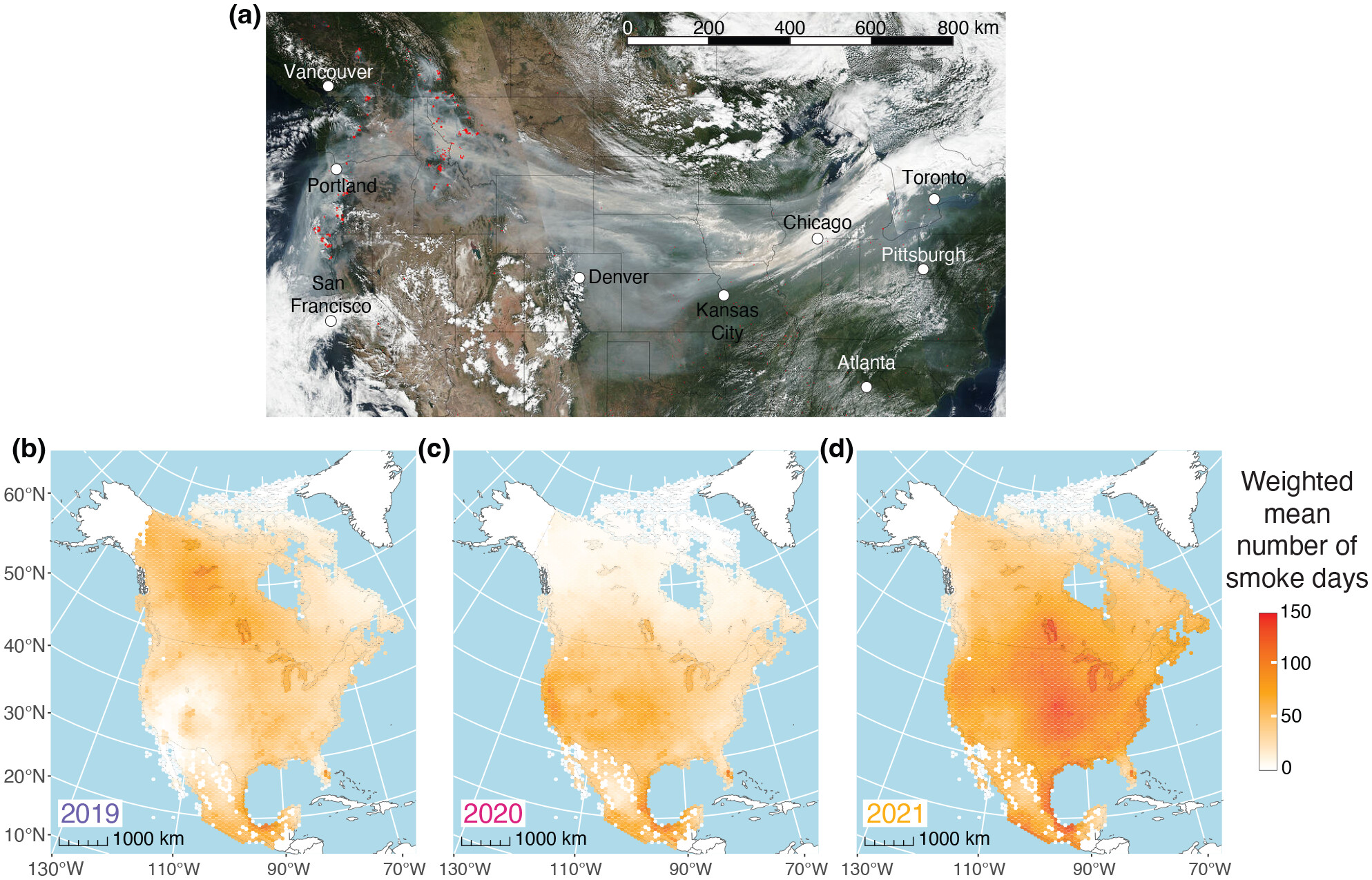
As wildfire activity increases, the resulting smoke can spread across regional to continental scales, altering fundamental physical, chemical, and biological dynamics within lake ecosystems. We quantify lake exposure to smoke across North America over 3 years to demonstrate the spatial and temporal scope of these interactions, and introduce the concept of smoke-days as a metric of exposure for lakes. In North America, 99.3% of lakes experienced smoke from 2019 to 2021, affecting 1,333,687 lakes. We review the mechanisms through which smoke can affect lakes and synthesize our current understanding of smoke effects to develop a conceptual framework for understanding lake responses.
RESEARCH ARTICLES
Modeling individual growth reveals decreasing gray whale body length and correlations with ocean climate indices at multiple scales
- First Published: 07 June 2024
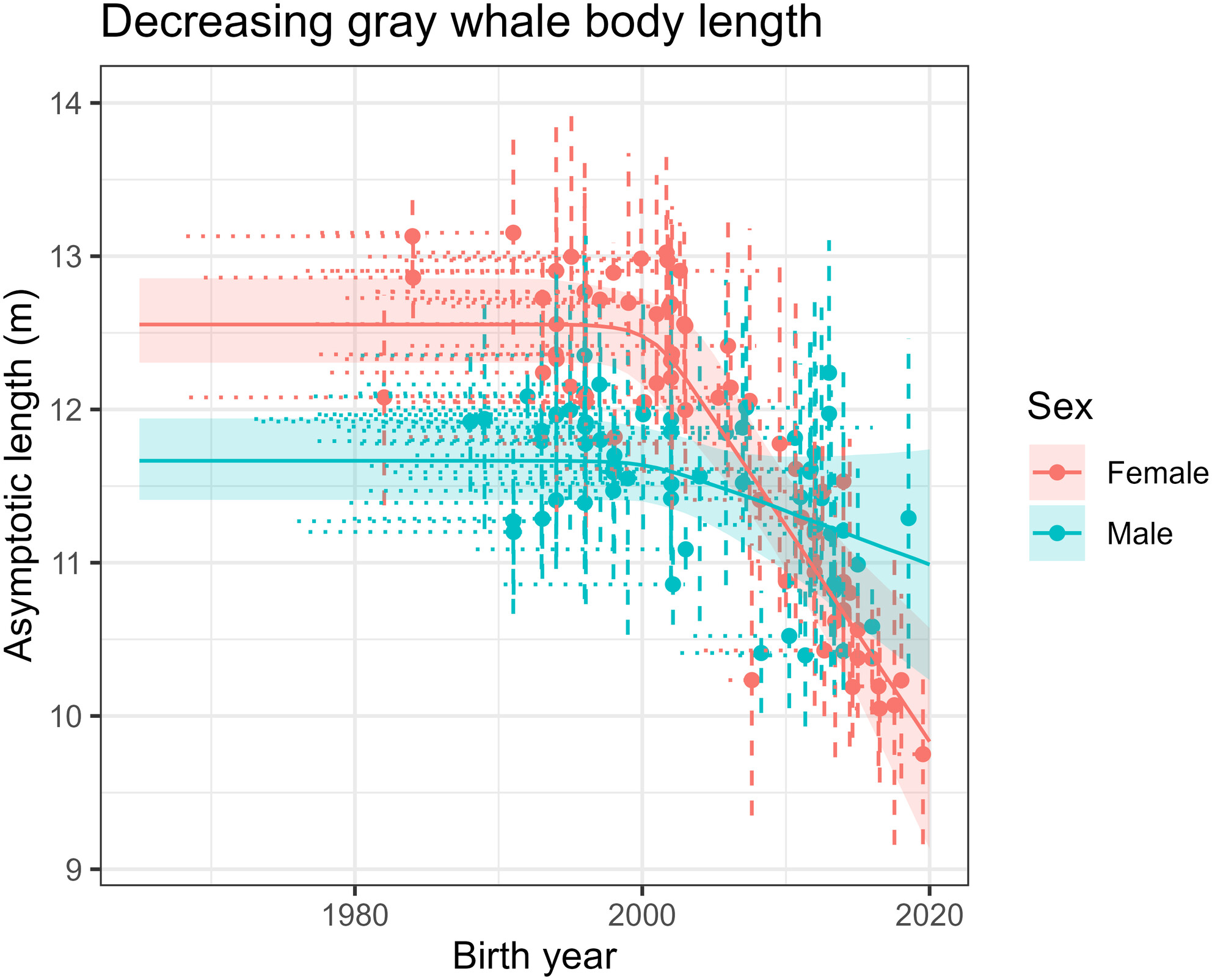
We investigated the trend in the body size of gray whales using a distinct foraging ground along the NE Pacific coast and tested its association with two climatic indices at multiple scales. We detected a strong decline in maximum length, which started around the year 2000 and has been stronger in females. We found that this decline was correlated with a decadal index of ocean climate oscillation and, at smaller scales, the balance between productivity and nutrient retention. Our results contribute to the mounting evidence that marine predator body size is shrinking in association with climate changes.
Alder expansion stimulates nitrogen oxide (NOx) emissions from southern Eurasian permafrost peatlands
- First Published: 07 June 2024
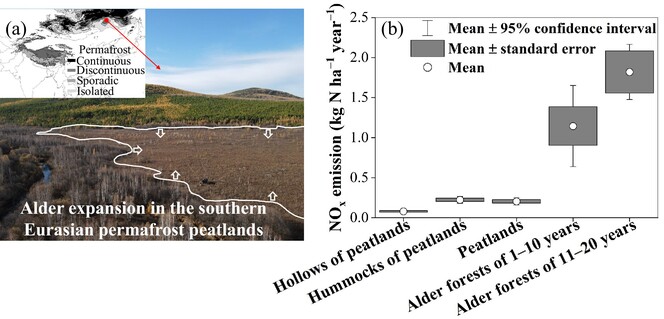
This study conducts the first in situ measurements of nitrogen oxide (NOx) fluxes in the southern Eurasian permafrost region over 2 years and uncovers that peatlands are unexpectedly significant NOx sources with the tremendous spatial variability within sub meter scales caused by the hummock-hollow microtopography. Alder expansion greatly stimulates NOx emissions from the peatlands and accelerates permafrost degradation.
Out of the frying pan into the fire: Predicted warming in alpine streams suggests hidden consequences for aquatic ectotherms
- First Published: 12 June 2024
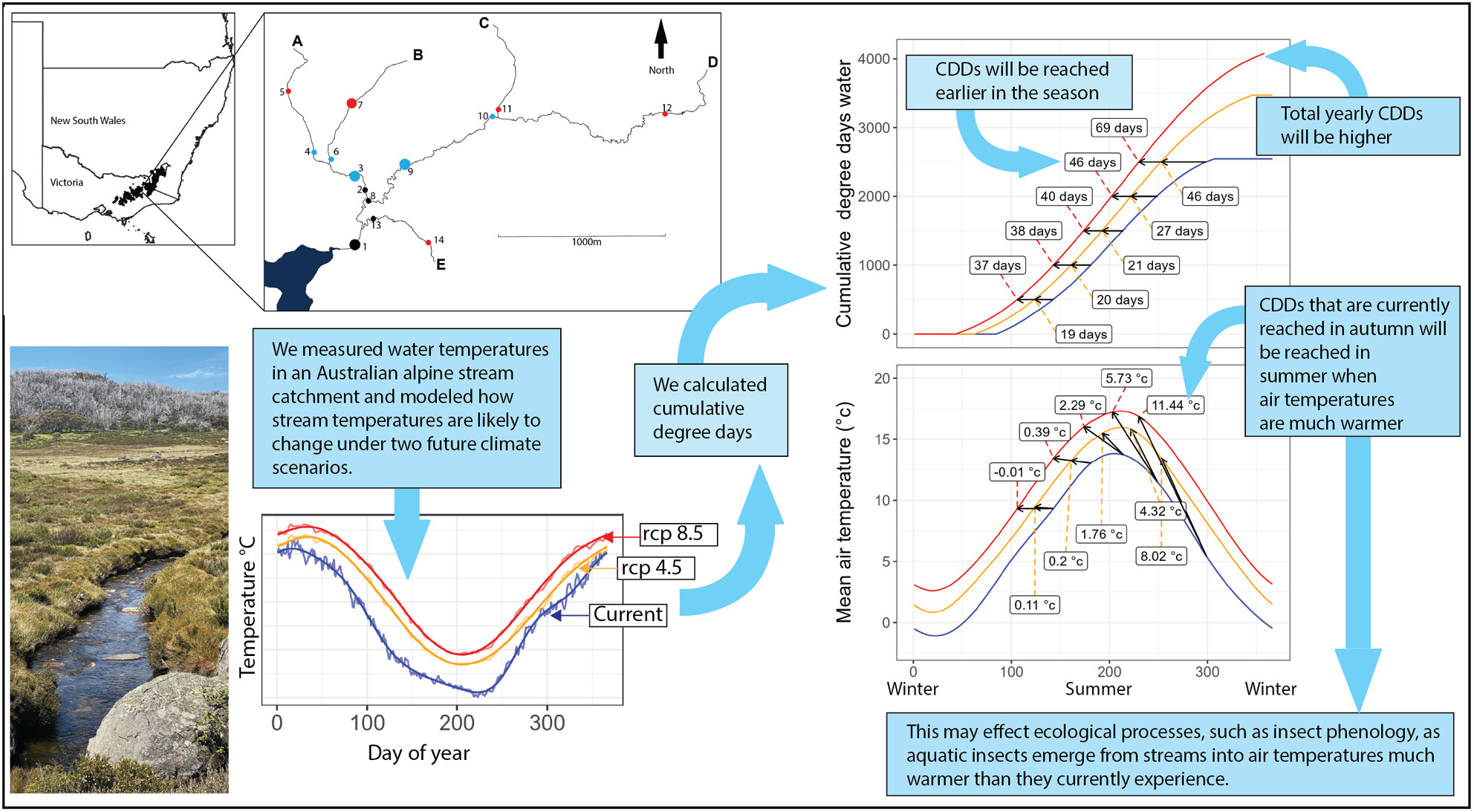
We modelled water temperatures and calculated cumulative degree days (CDDs) in an alpine stream catchment under current and two future climate scenarios. Our models predict that the rate and total amount of degree day accumulation will increase, water temperatures will become more homogeneous across the landscape, and specific CDDs will occur earlier in the season. CDDs that currently occur toward the end of autumn, when air temperatures are cold, are likely to arrive in summer under future climates, when air temperatures may be upwards of 12°C warmer; potentially impacting ecological processes that are intricately linked with CDDs.
CORRIGENDUM
Corrigendum to “Evidence for evolutionary adaptation of mixotrophic nanoflagellates to warmer temperatures”
- First Published: 09 June 2024
RESEARCH ARTICLES
A circumpolar study unveils a positive non-linear effect of temperature on arctic arthropod availability that may reduce the risk of warming-induced trophic mismatch for breeding shorebirds
- First Published: 09 June 2024
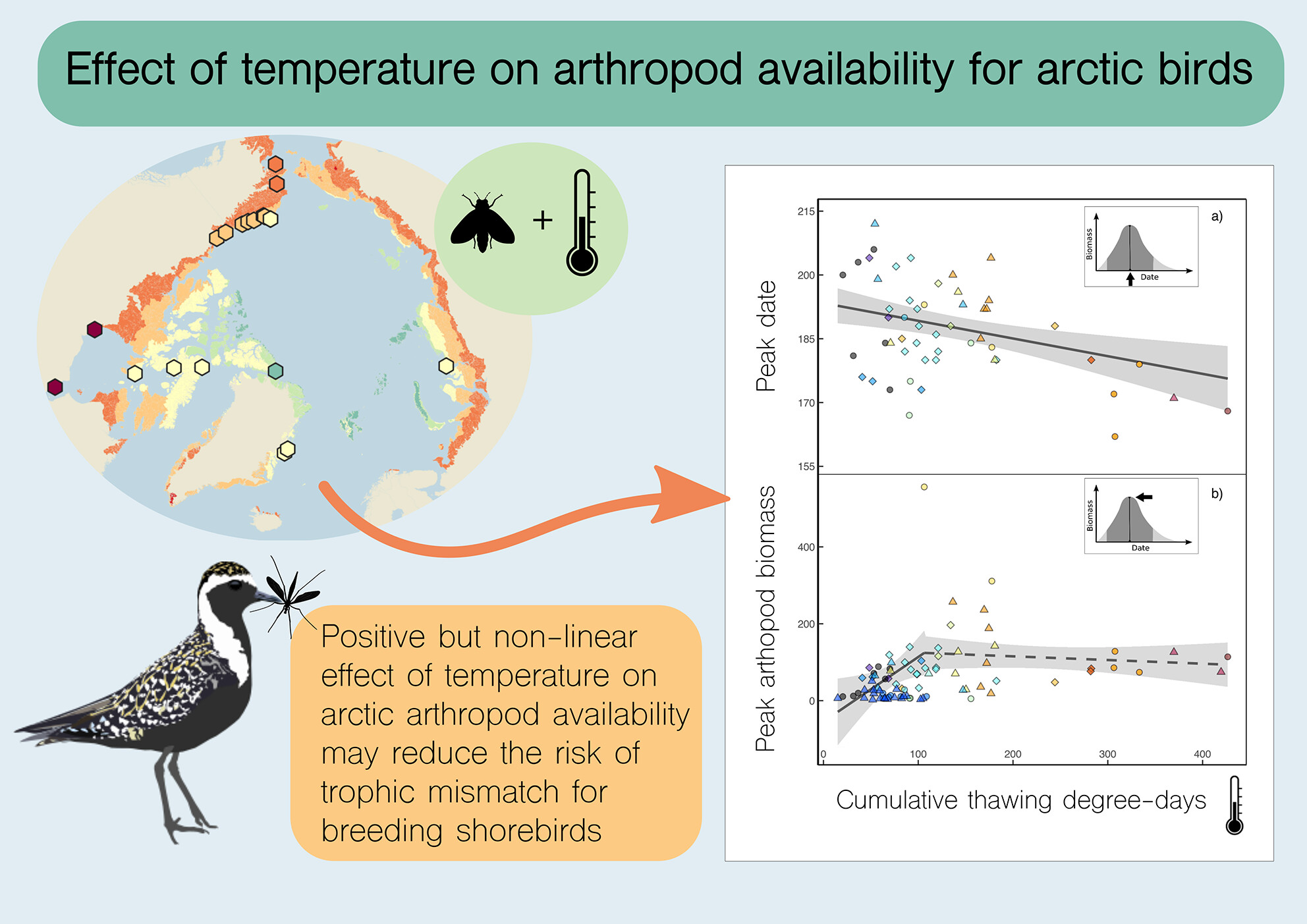
Arctic migratory birds heavily rely on seasonal arthropods for food. As temperatures rise, arthropod growth and activity change, potentially causing birds to become desynchronized with their food. Studying 19 sites across a wide temperature range from Subarctic to High Arctic, we found that warmer temperatures led to earlier and increased arthropod peaks. However, this increase in biomass was only significant within certain temperature ranges. Prolonged exposure to elevated temperatures could therefore improve food access for some Arctic birds, potentially reducing the risk of a mismatch with their prey.
Rubble persistence under ocean acidification threatened by accelerated bioerosion and lower-density coral skeletons
- First Published: 11 June 2024

Increased disturbances on reefs are causing coral reefs to deteriorate, leading to the formation of coral rubble beds. This rubble, made of dead coral pieces, gets quickly colonized by a multitude of micro- and macro-organisms. This study found that these organisms break down the rubble rapidly, and the rate increases with ocean acidification, as well as in lower-density coral skeleton, undermining stability, and persistence of reef structures.
TECHNICAL ADVANCE
Pixel walking along the boreal forest–Arctic tundra ecotone: Large scale ground-truthing of satellite-derived greenness (NDVI)
- First Published: 11 June 2024
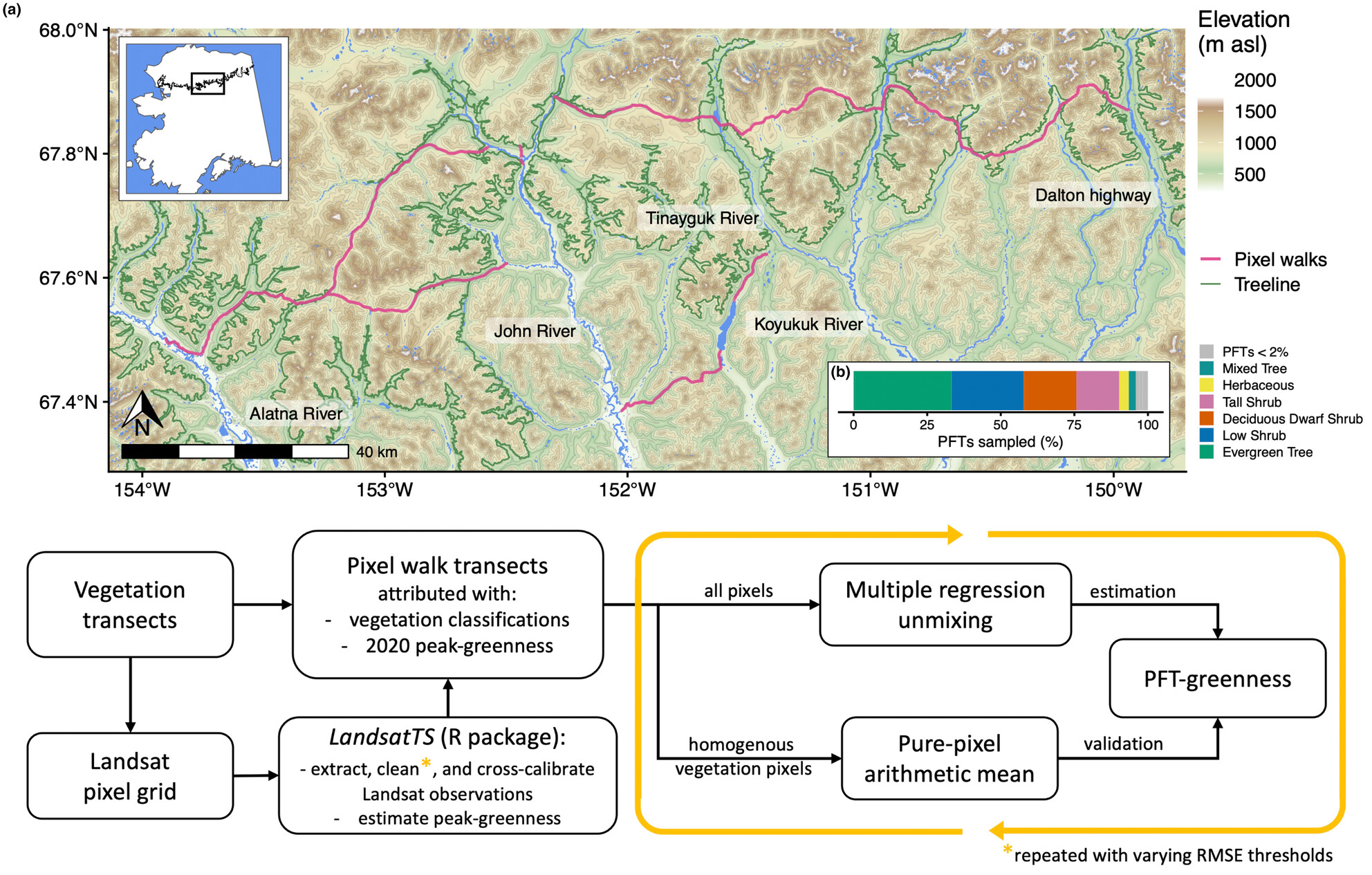
Using ~640 km of vegetation transects and ~24,000 Landsat pixels across Alaska's central Brooks Range, we demonstrate novel methods and analyses for improving ecological interpretation of satellite-observed vegetation greenness. Satellite observations, which are essential for monitoring changes at ecosystem scales, require field data for interpretation. By collecting data at large spatial scales we relate ground-based observations to satellite measurements.
RESEARCH ARTICLES
Island biodiversity in peril: Anticipating a loss of mammals' functional diversity with future species extinctions
- First Published: 19 June 2024
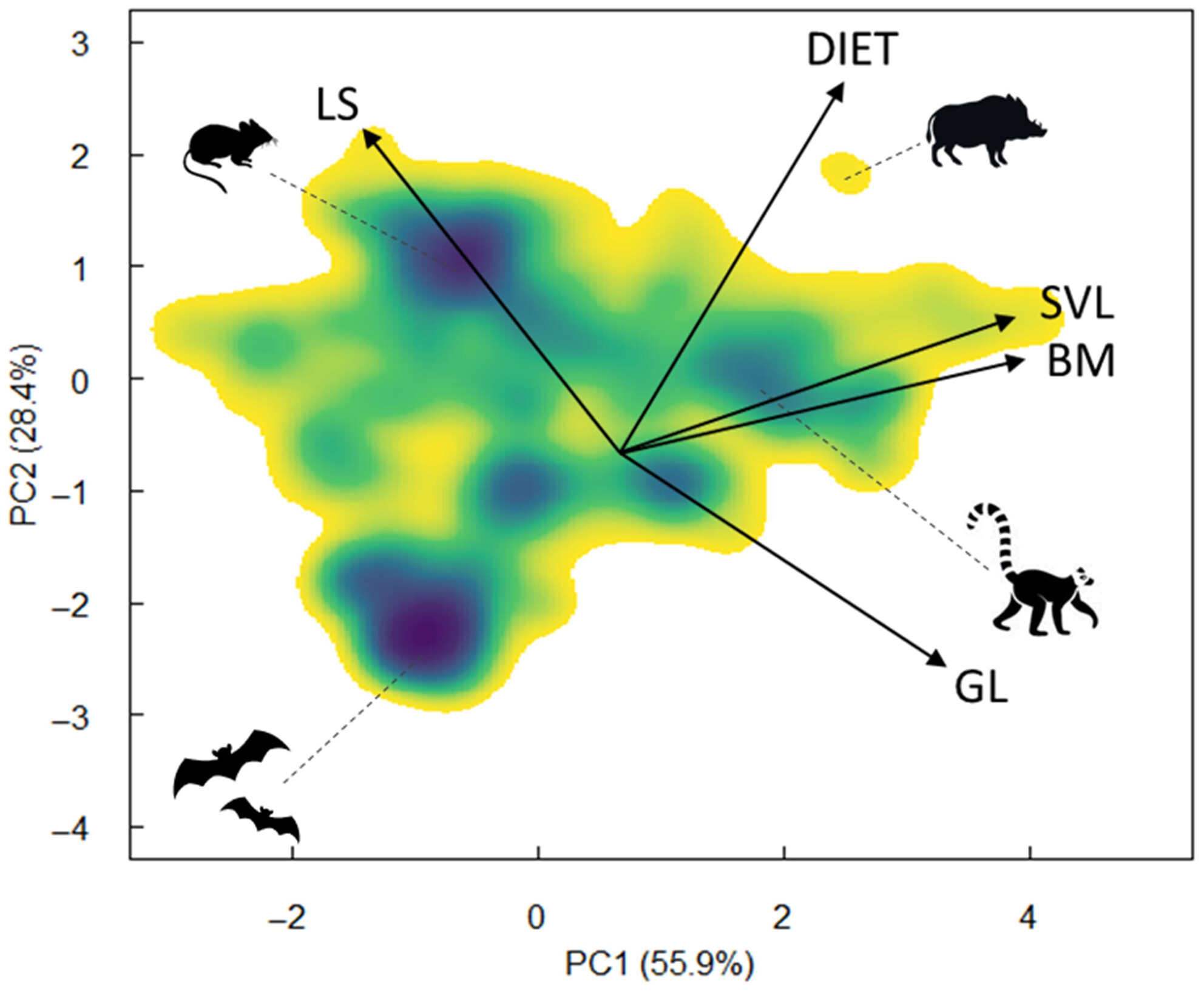
Islands are home to unique assemblages that include a substantial proportion of threatened species. The aim of this study was to evaluate how potential future extinctions will affect islands functional space. We found that the extinction of threatened mammals would reduce the range of functional strategies of insular communities on most islands. This functional loss would be higher on small, isolated and/or species-rich islands. It is further demonstrated that in general this loss would not be compensated by introduced species. These results suggest that the preservation of native species remains crucial for maintaining the current functioning of island ecosystems.
REVIEWS
A framework for understanding climate change impacts through non-compensatory intra- and interspecific climate change responses
- First Published: 24 June 2024
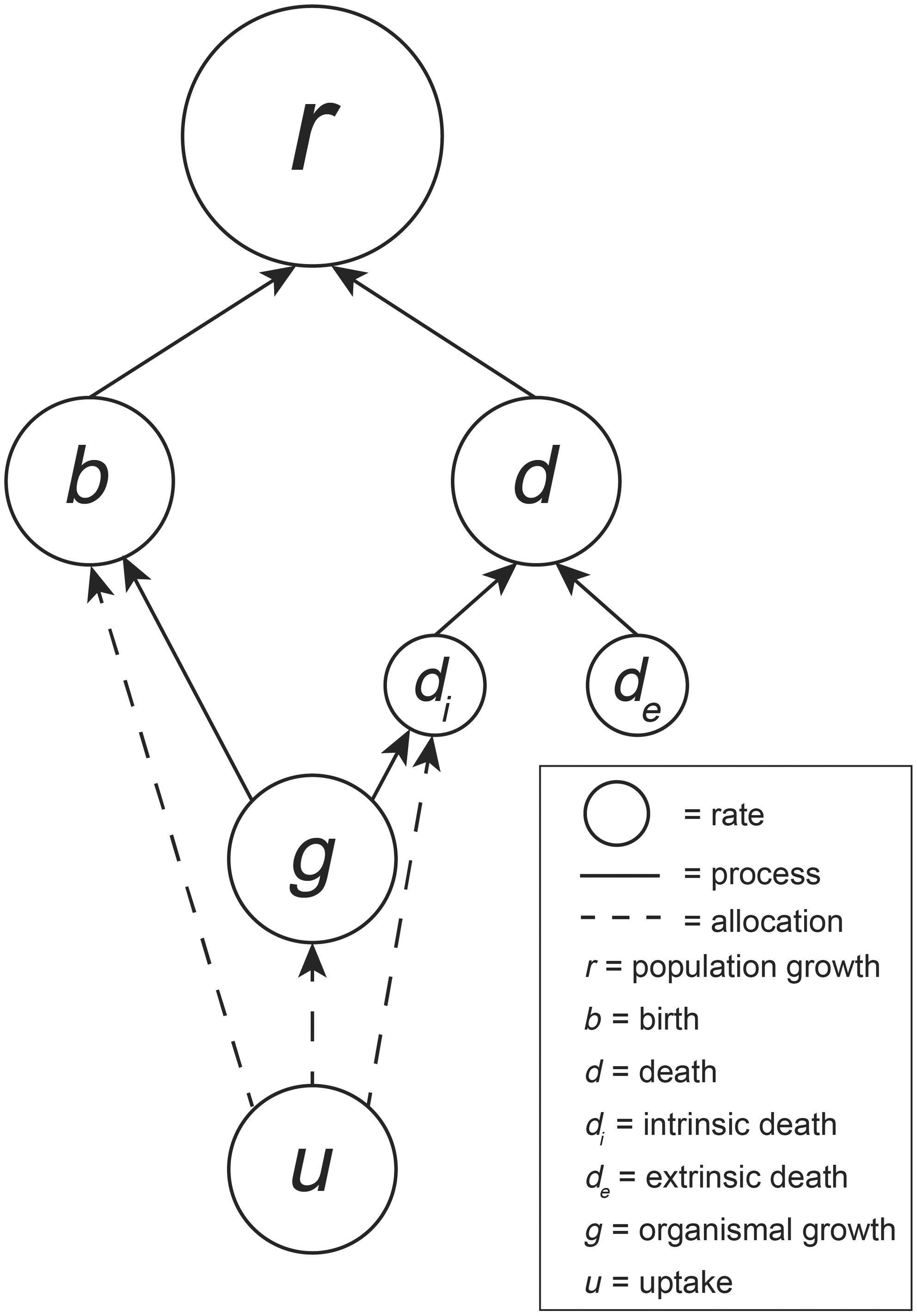
Understanding and predicting how populations are responding to climate change is a major challenge. Here Coblentz et al. develop a hierarchical framework to examine how non-compensatory changes in rates can ultimately lead to population growth or decline with climate change. Applying this framework will help researchers to understand why particular populations may be declining or increasing with climate change and to predict how different aspects of climate change might affect focal populations.
CORRIGENDUM
Correction to “A new empirical framework to quantify the hydraulic effects of soil and atmospheric drivers on plant water status”
- First Published: 17 June 2024
SCIENCE BEHIND THE NEWS
A new perspective on rangelands and pastoralists to reverse their silent demise, which is impacting climate and food supply for billions
- First Published: 17 June 2024
The article summarizes the UNCCD's Global Land Outlook Thematic Report on Rangelands and Pastoralists, recently launched. The report outlines a conceptual framework for managing rangelands as social-ecological systems and provides several recommendations for preserving, managing and restoring rangelands.
RESEARCH ARTICLES
Climate mitigation potential of cover crops in the United States is regionally concentrated and lower than previous estimates
- First Published: 18 June 2024
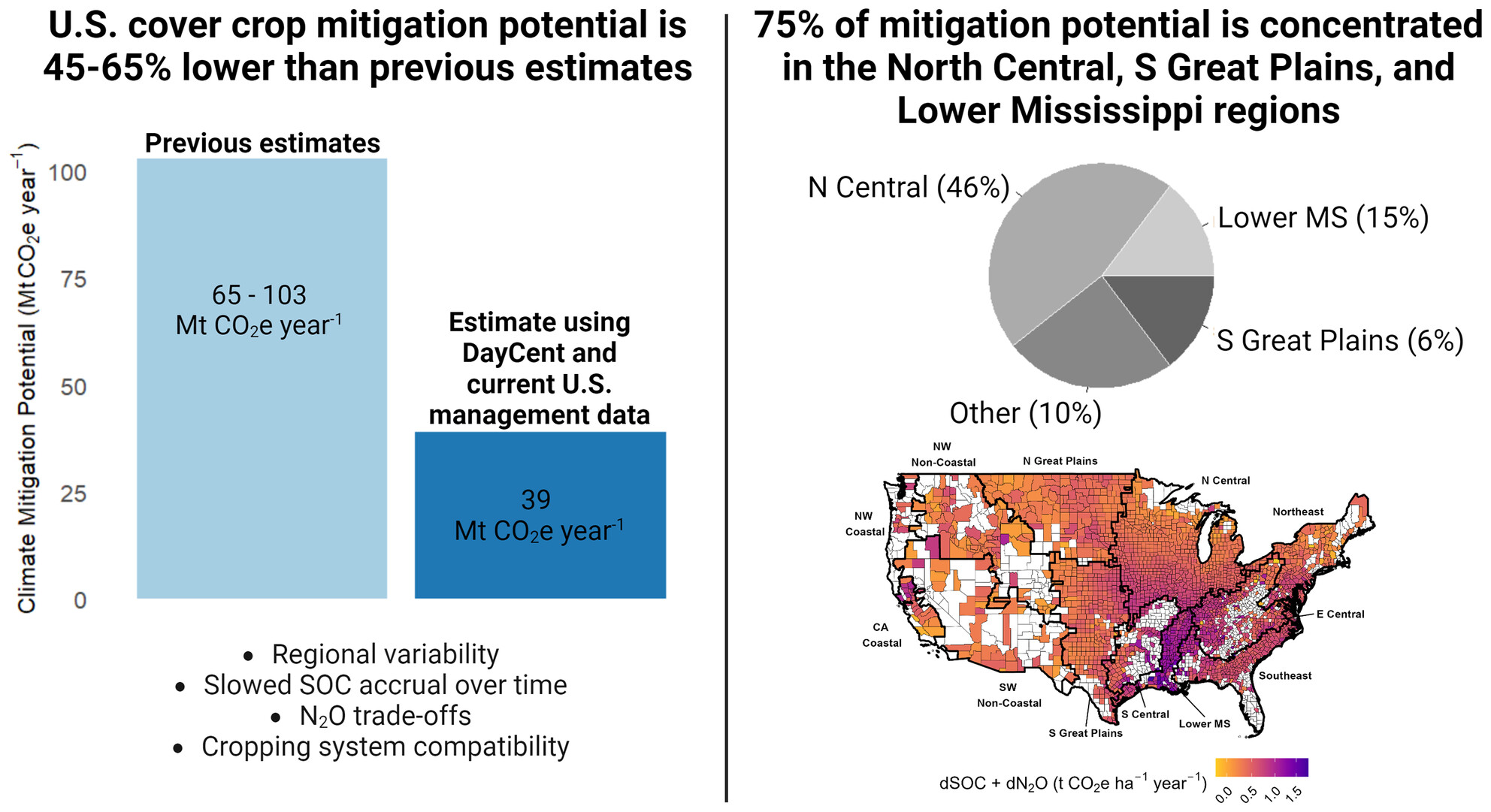
The United States has substantially increased investment in cover crop (CC) incentives to meet emission reduction targets, but the extent to which improved crop management can mitigate climate change is contested. Using the DayCent biogeochemical model and current national survey data, we estimated the mitigation potential of CCs in the United States to be 39.0 ± 24.1 Mt CO2e year−1, 45%–65% lower than previous assessments. The majority (75%) of this potential is concentrated in the North Central, Southern Great Plains, and Lower Mississippi regions. This work provides timely evidence for the limited potential of CC adoption to contribute to US emissions targets and informs where CC incentive programs should be prioritized.
Long-term soil warming decreases soil microbial necromass carbon by adversely affecting its production and decomposition
- First Published: 21 June 2024
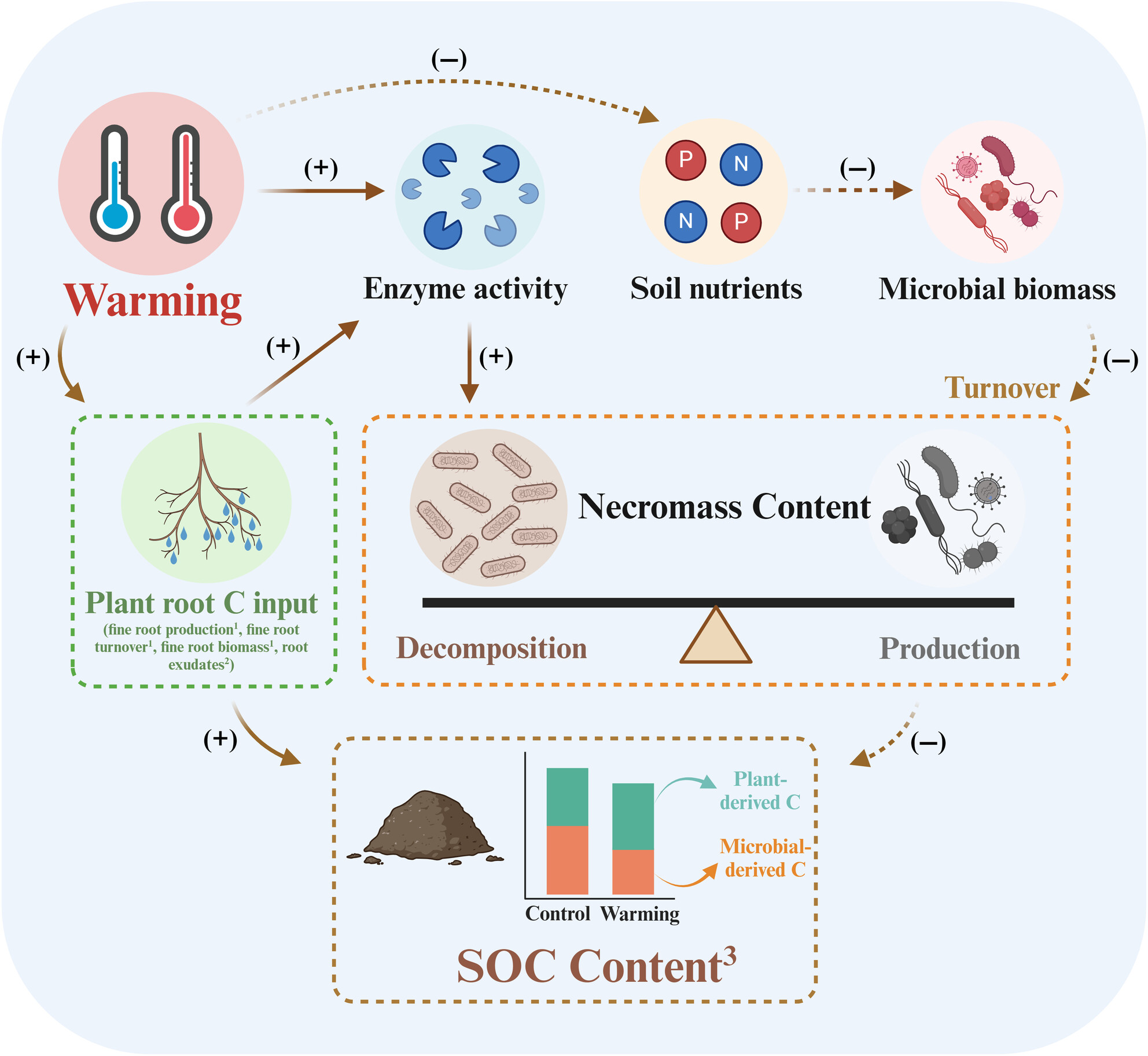
Our study reveals that prolonged soil warming in temperate forests diminishes microbial necromass carbon (MNC). This decline is primarily due to reduced soil phosphorus, necessary for microbial biomass synthesis, and enhanced soil enzyme activities that accelerate MNC decomposition. These factors create a disconnect between MNC production and decomposition, leading to decreased MNC accumulation under warming conditions.
REVIEWS
Missing phosphorus legacy of the Anthropocene: Quantifying residual phosphorus in the biosphere
- First Published: 26 June 2024

The amount of phosphorus (P) circulating in soil and water has been suddenly increased by human activities in less than 100 years, largely by mining of phosphate rock deposits to enrich soils via fertilization for crop production. How much of this “new” human-added P has accumulated in the soil–water continuum, and where it is located, is a necessary challenge to solve in order to optimize trade-offs bet agroecosystem productivity and water quality impairment. This article reviews knowns and unknowns to quantify the amount and distribution of residual P.
RESEARCH REPORTS
Unveiling the impact of soil methane sink on atmospheric methane concentrations in 2020
- First Published: 26 June 2024

In 2020, despite a decrease in human-induced methane emissions due to COVID-19 measures, atmospheric methane levels surged. Research investigating the soil methane sink using a model found a notable 0.35 ± 0.06 Tg increase globally in 2020 compared to 2019, attributed largely to warmer soil temperatures in northern high latitudes. This highlights the critical role of terrestrial ecosystems in mitigating methane, underscoring the importance of considering soil methane sinks in understanding atmospheric methane dynamics.
RESEARCH ARTICLES
Global pattern of organic carbon pools in forest soils
- First Published: 20 June 2024
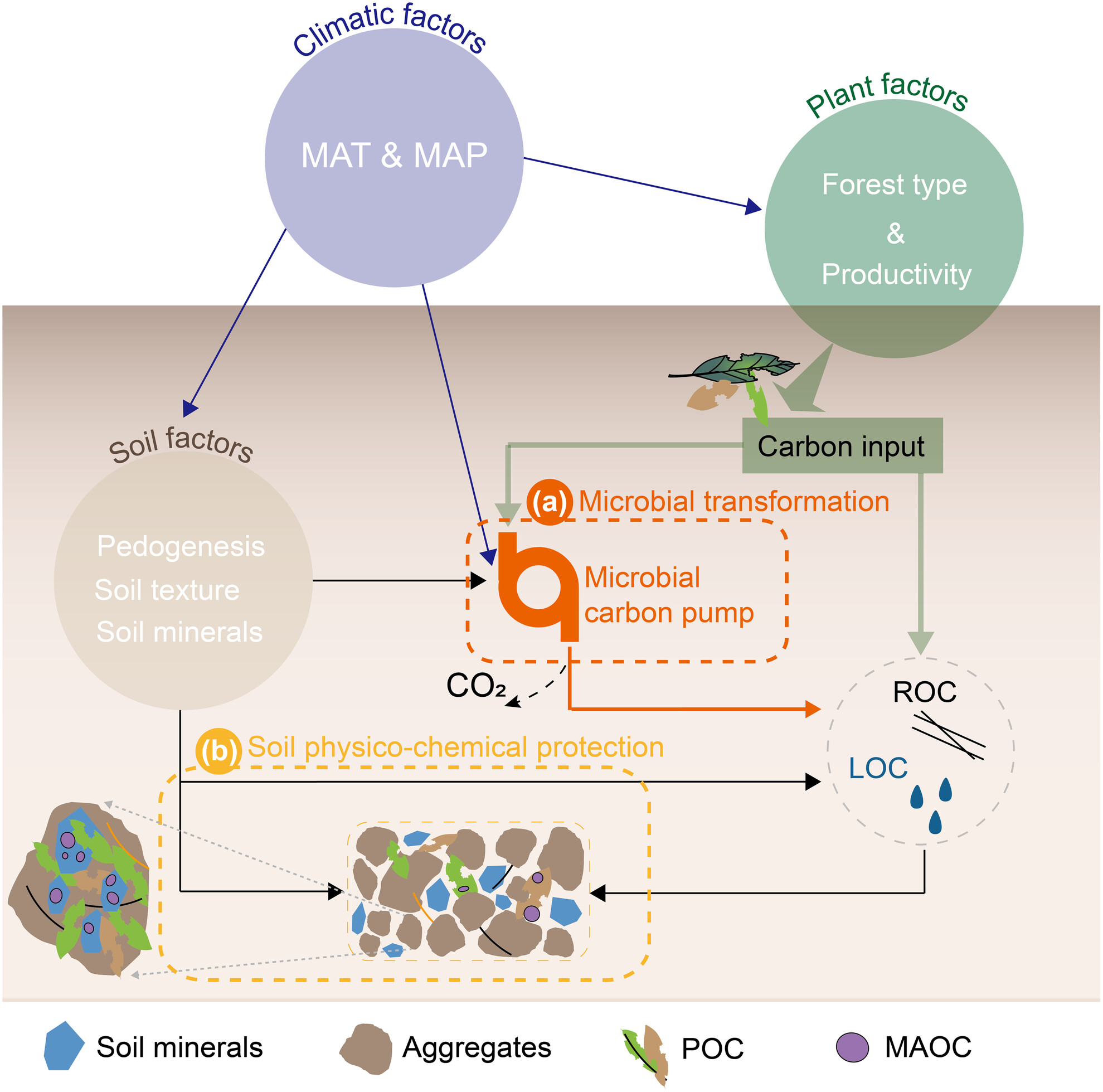
Our study investigated the global distribution of organic carbon and its components in forest soils, highlighting the varying carbon storage across different zones/regions. By analyzing the effects of climate, vegetation, and soil factors on soil carbon pools, we aim to better understand the main controls of soil organic carbon in forest ecosystems.
LETTERS TO THE EDITOR
Developing an ecological stoichiometry-based framework for tracing the sources of soil organic matter
- First Published: 26 June 2024
OPINION
The challenge of estimating global termite methane emissions
- First Published: 20 June 2024
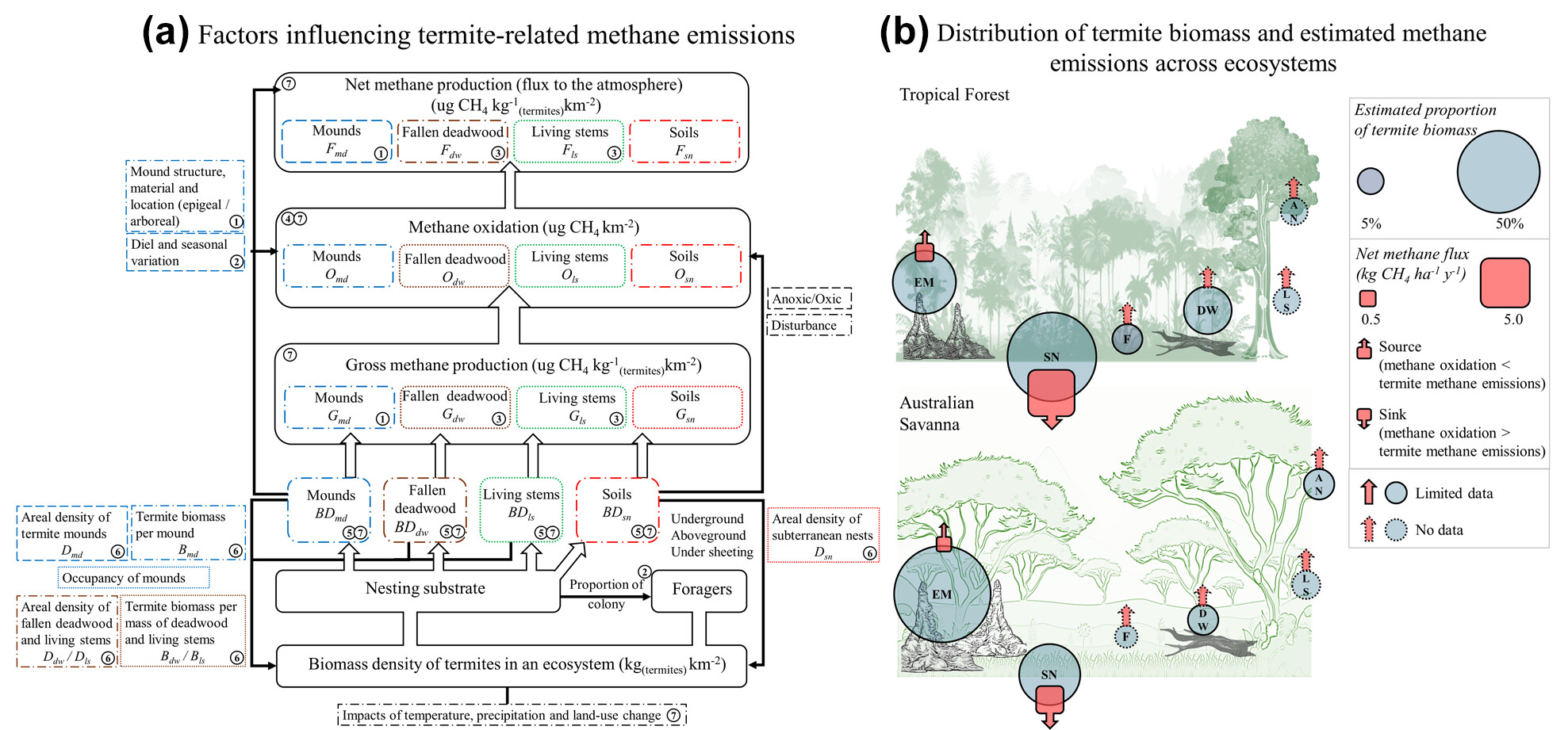
Methane is the second most important greenhouse gas. Like ruminants, termites produce methane as a by-product of microbial digestion in their gut and have a comparable global biomass. Therefore, various studies have quantified global termite methane emissions. However, we conclude that global termite methane emissions remain unclear due to inadequate data and insufficient consideration of termite ecology or accountability of methanotrophs, which remove any methane produced before it reaches the atmosphere. To reach a better estimate, new technology must be utilised to consider all termite sources, including soil, deadwood, tree stems and termite mounds.
RESPONSE
Refining stoichiometric approaches to trace soil organic matter sources
- First Published: 26 June 2024
In their Letter-to-Editor, Liu & Chen (2024) raised the importance and suitability of our recent stoichiometric approach to assess the contribution of plant residue (litter) and microbial sources to mineral-associated organic matter (MAOM). We highly appreciate their Letter as well as the further suggestion and comments and offer two points of clarification. We call for staying aware of methodological benefits and limitations of each approach, and further develop and compare multiple methods to develop a clearer picture of where and to what extent MAOM is formed from direct vs. indirect (via the microbial funnel) plant inputs.
RESEARCH ARTICLES
Bumble bee responses to climate and landscapes: Investigating habitat associations and species assemblages across geographic regions in the United States of America
- First Published: 24 June 2024
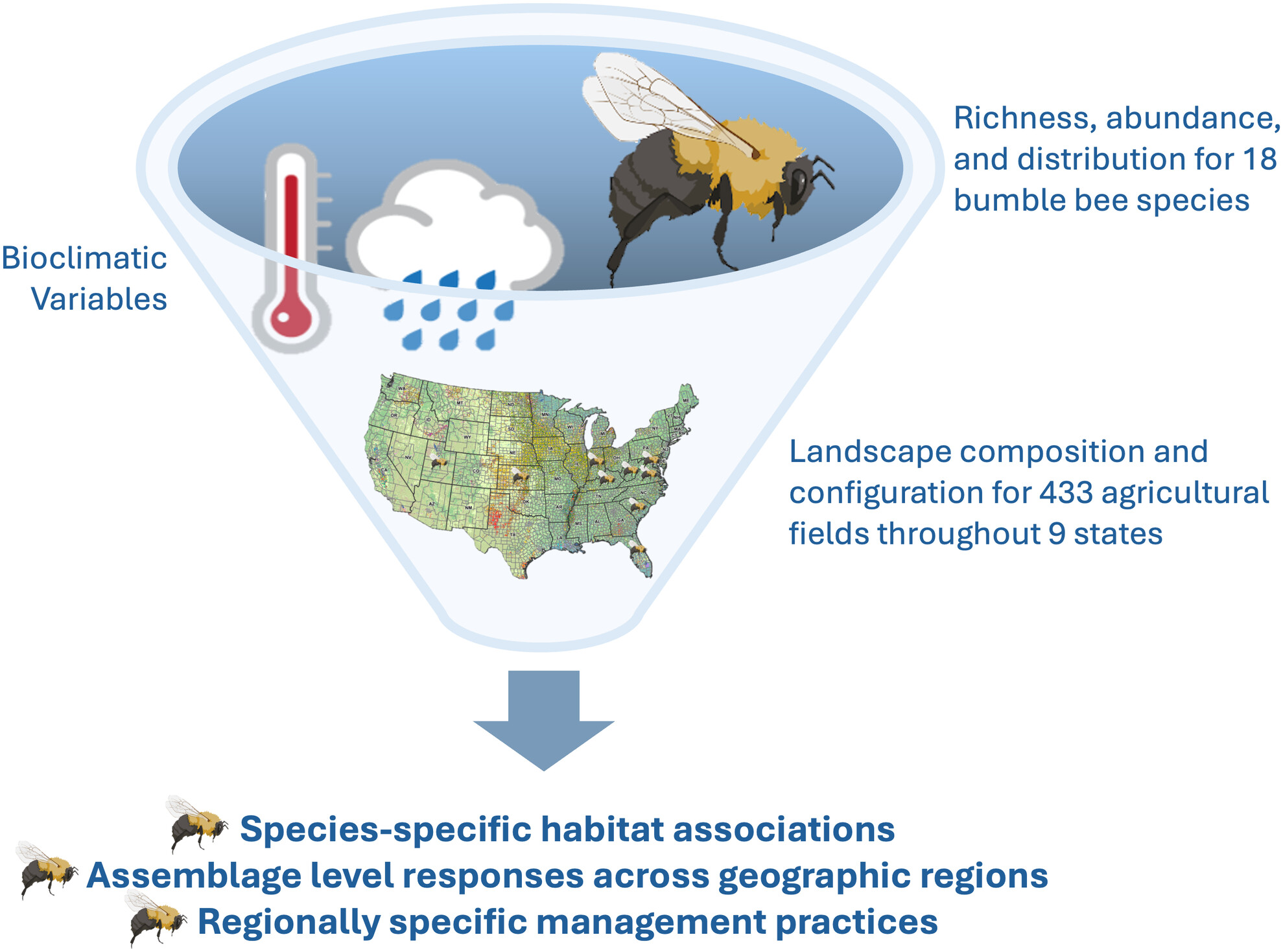
Bumble bee communities are changing due to climate change and land cover alteration. This study integrated richness, abundance, and distribution data for 18 bumble bee species with site-specific climate, landscape composition, and landscape configuration data to evaluate the effects of environmental stressors on bumble bees throughout 433 agricultural fields in the United States. Temperature, precipitation, and surrounding landscape influenced bumble bee species, but these effects differed by geographic region, notably between the east and west. These results enhance our understanding of bumble bee habitat needs and suggest region-specific management practices to support rich and diverse bumble bee populations in agroecosystems.
Intrinsic microbial temperature sensitivity and soil organic carbon decomposition in response to climate change
- First Published: 24 June 2024
SCIENCE BEHIND THE NEWS
Extreme wildfires in Canada and their contribution to global loss in tree cover and carbon emissions in 2023
- First Published: 27 June 2024
RESEARCH ARTICLES
Hurricanes enhance coral connectivity but also superspread coral diseases
- First Published: 25 June 2024
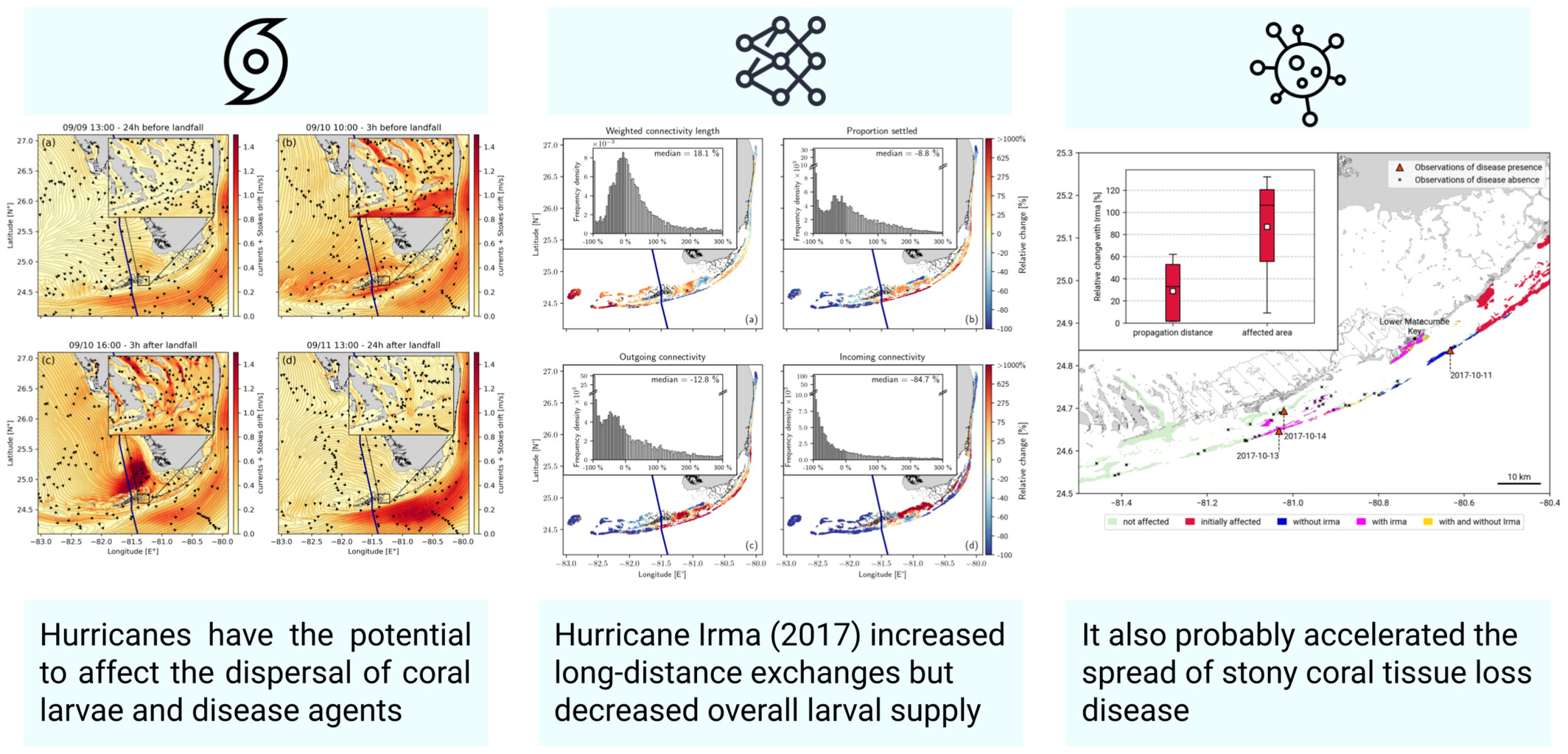
Climate change is threatening coral reefs by making oceans warmer and more acidic, which weakens corals and intensifies hurricanes. These storms alter ocean currents, affecting how coral larvae and diseases spread. By modeling Hurricane Irma's impact in 2017, we found it increased long-distance coral larval exchanges but reduced overall larval supply. This created new connections, potentially not only aiding coral resilience but also speeding up the spread of coral diseases by a month. As hurricanes grow stronger, their dual effects will intensify, causing more variability in coral ecosystems and faster changes in their health and composition.
Northeast Atlantic species distribution shifts over the last two decades
- First Published: 26 June 2024
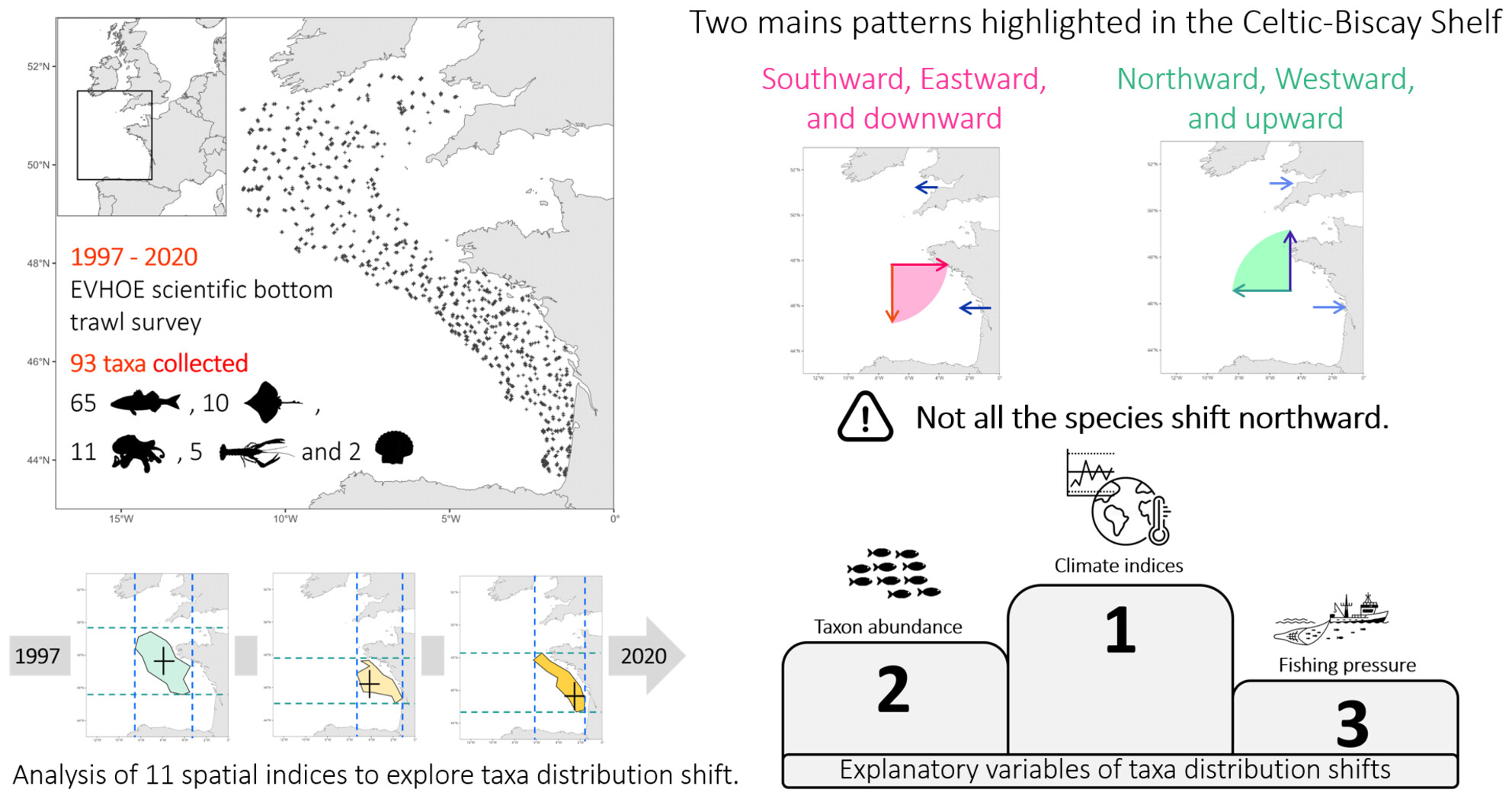
We explored marine species distribution shifts in the Celtic-Biscay Shelf and then quantified the relative importance of two main ecological processes explaining species distribution shifts: (1) modifications in habitat suitability due to climate change and/or (2) variation in population size due to density-dependent processes and fishing exploitation. We observed that 56% of the species shifted significantly. Not all species will necessarily shift northward and to deeper areas, as it is often expected. The main explanatory factors were climate change and species abundance. Fishing pressure was the third, but still significant, explanatory factor of species of greater commercial importance.




